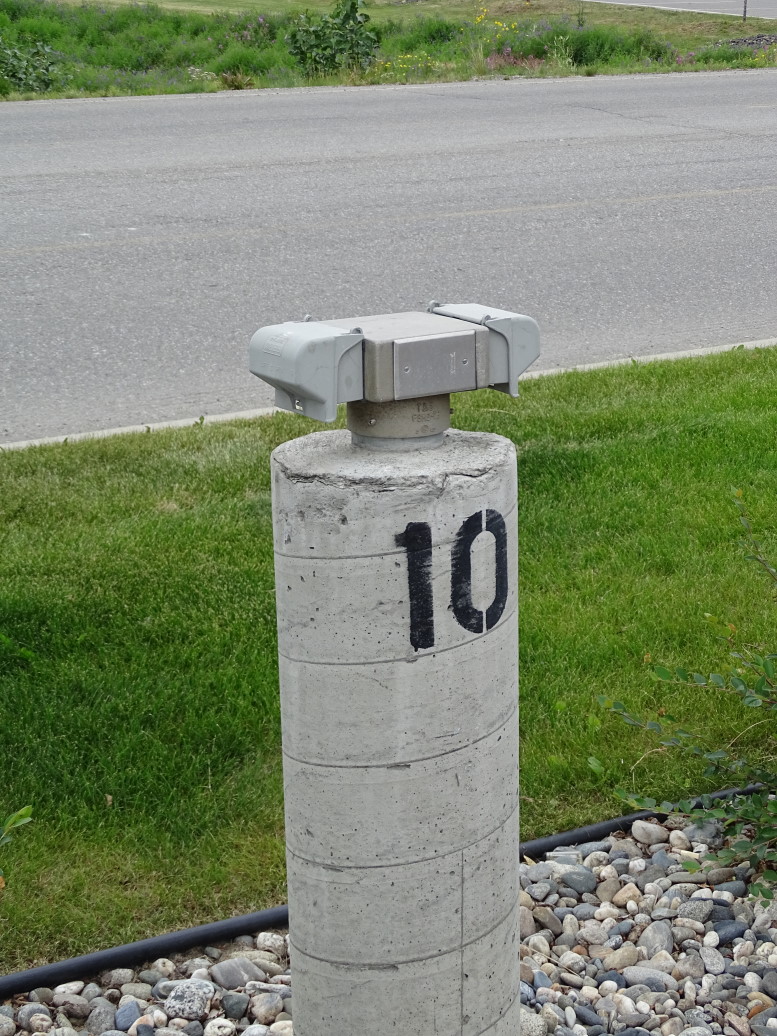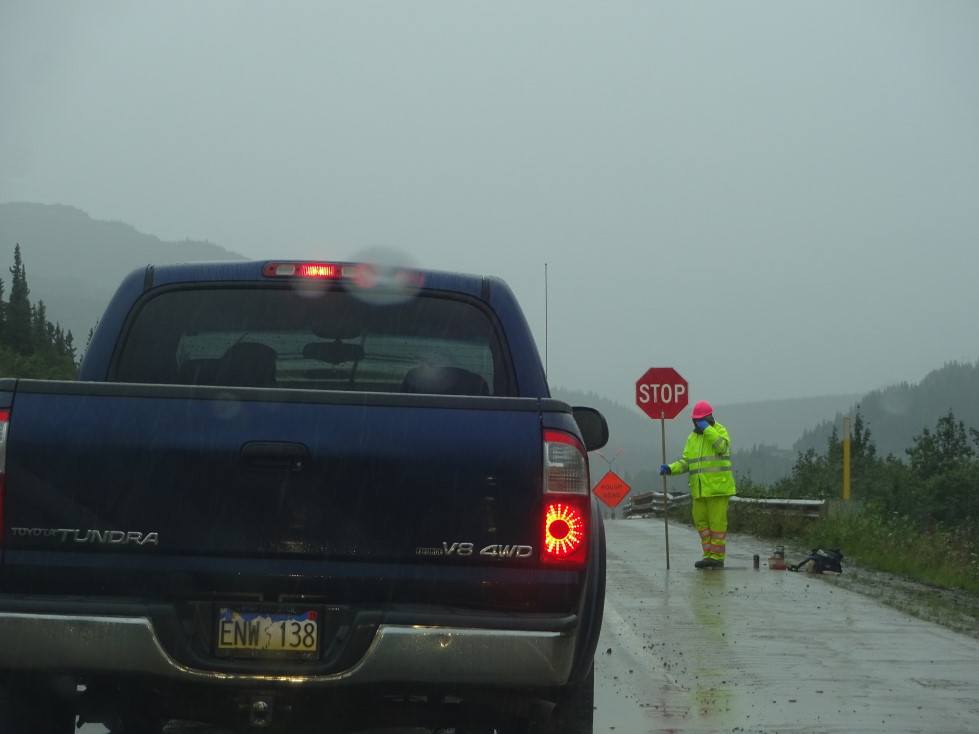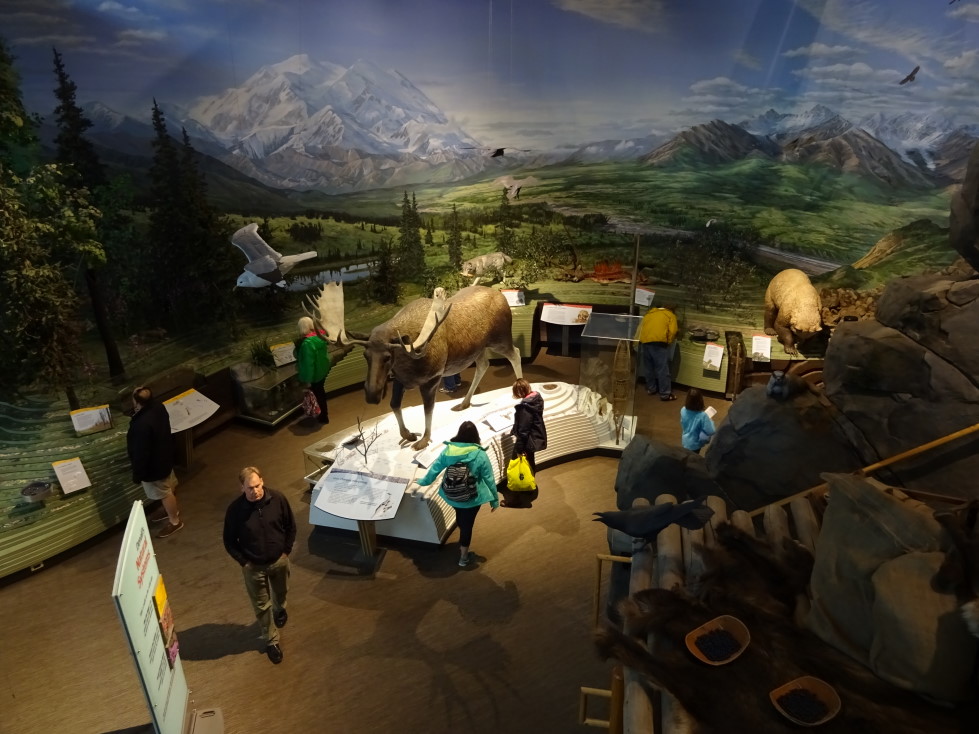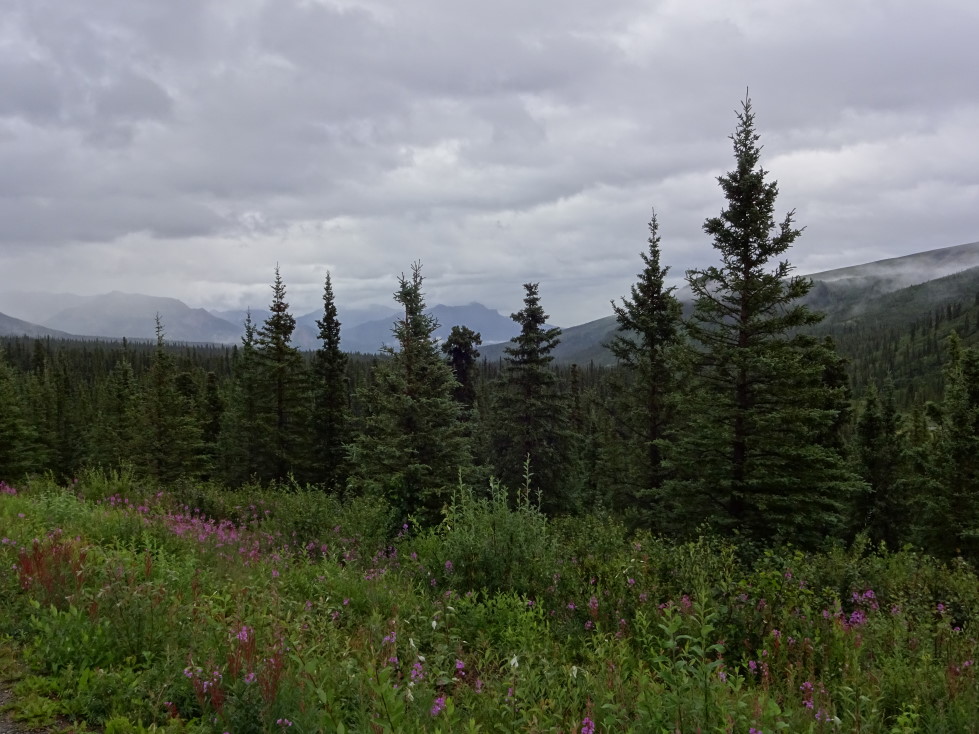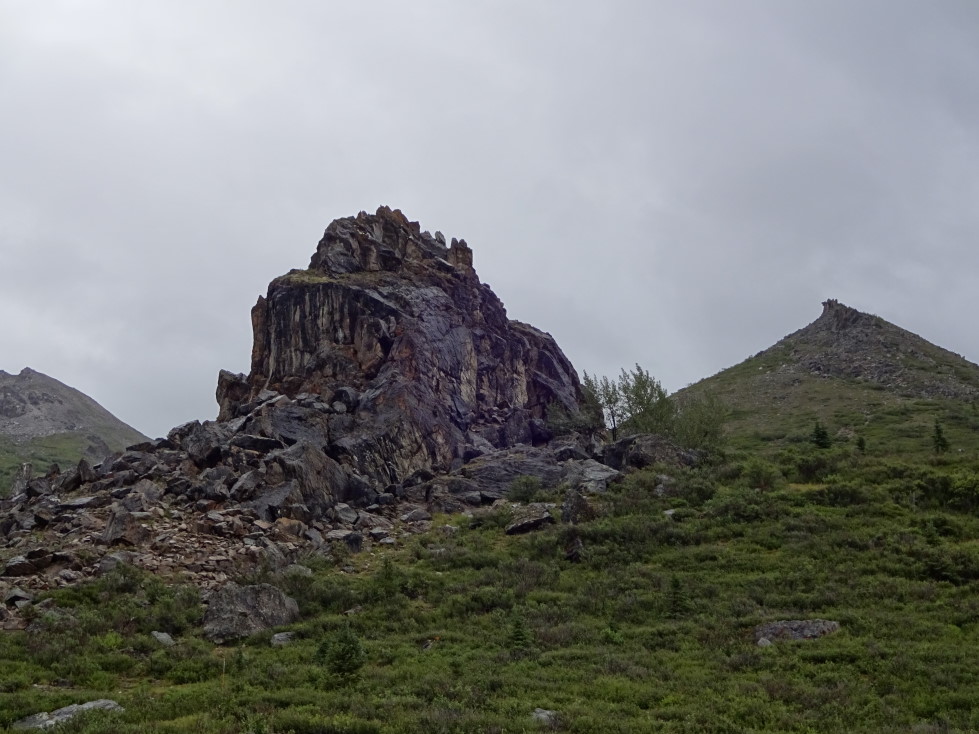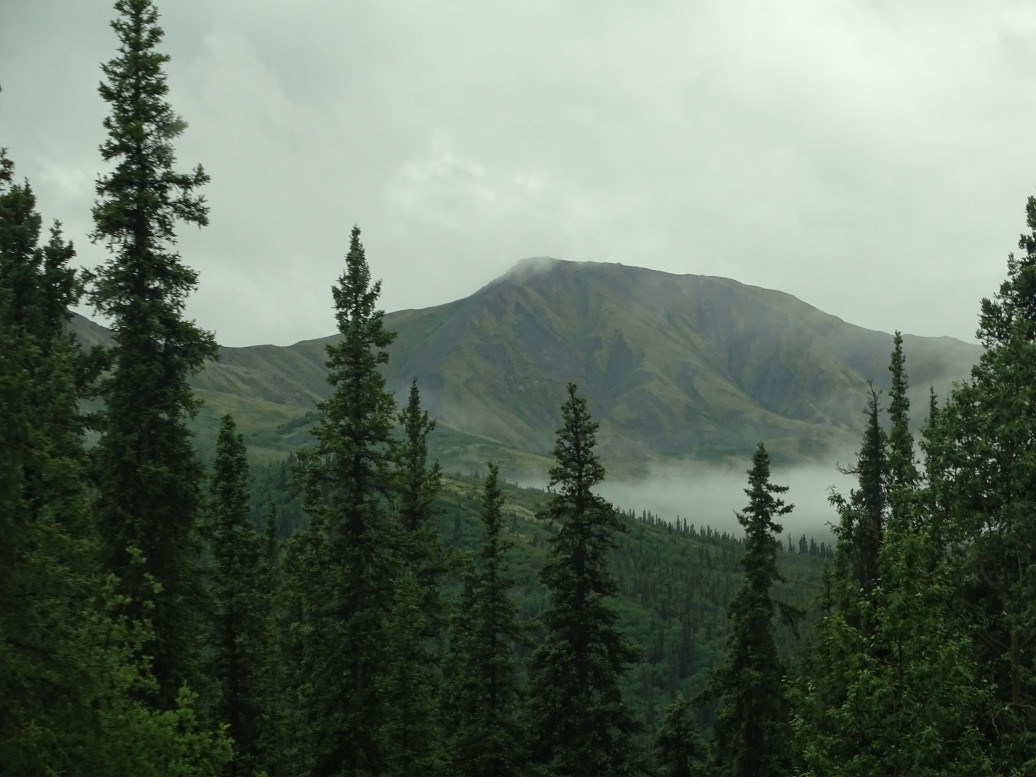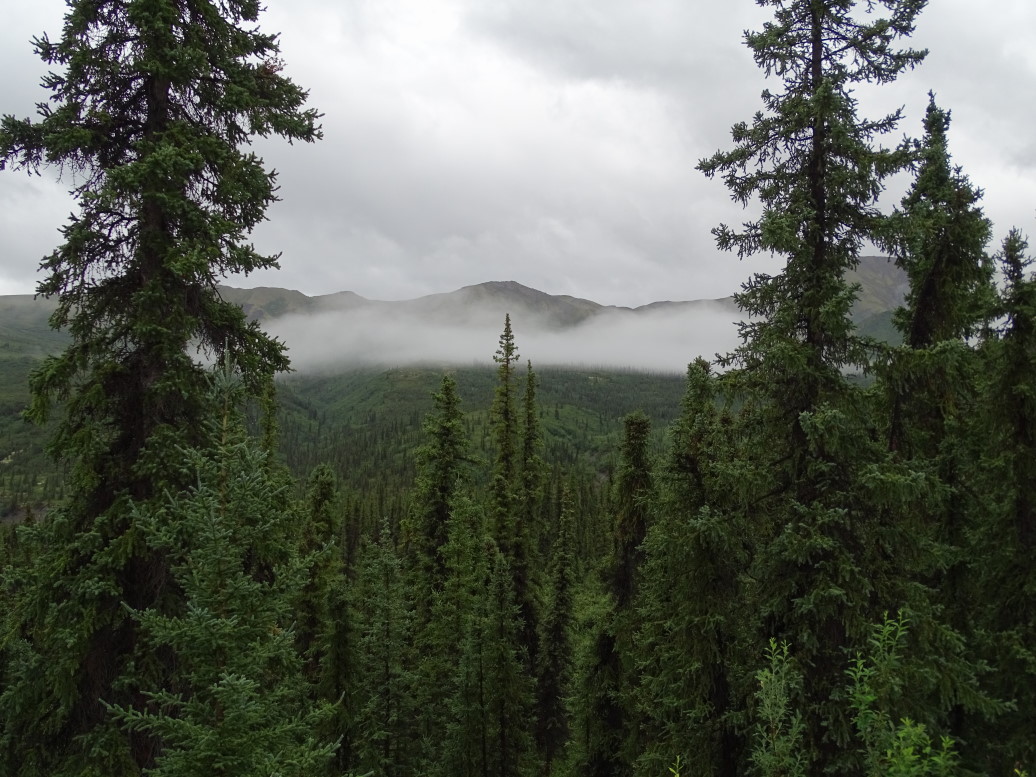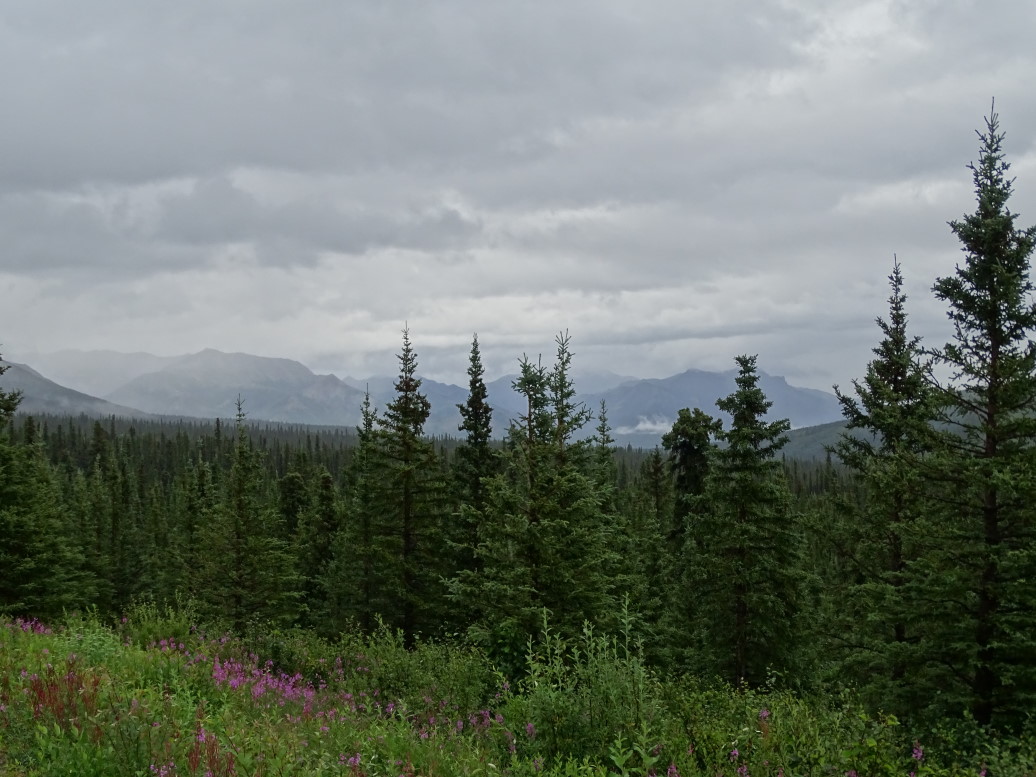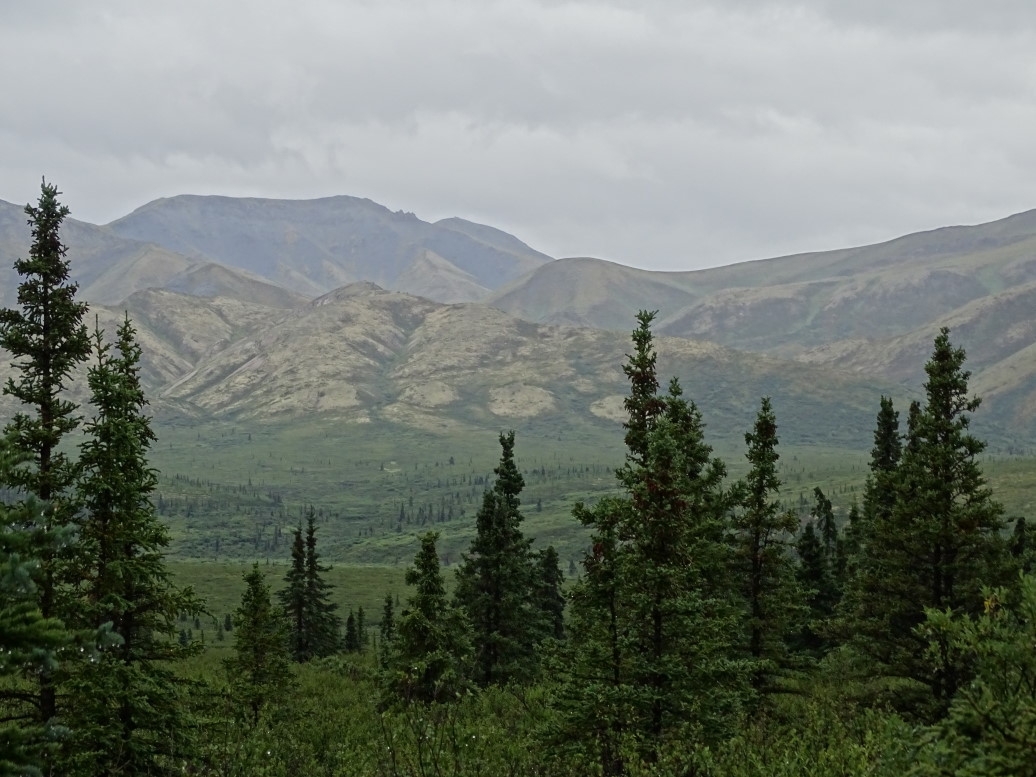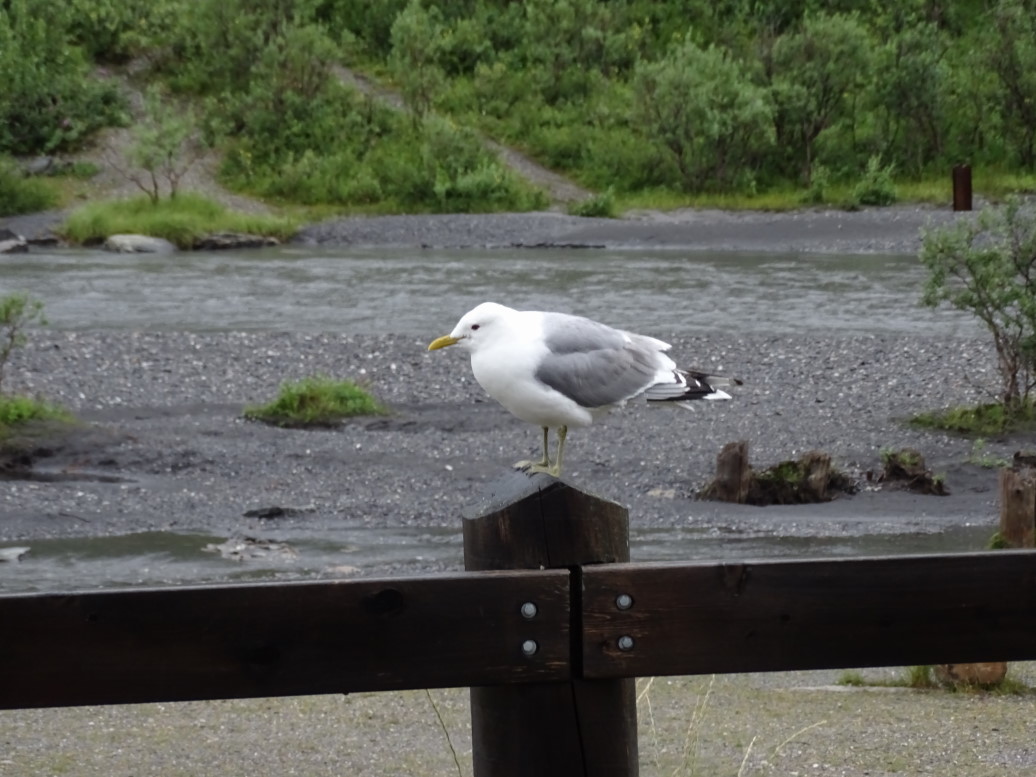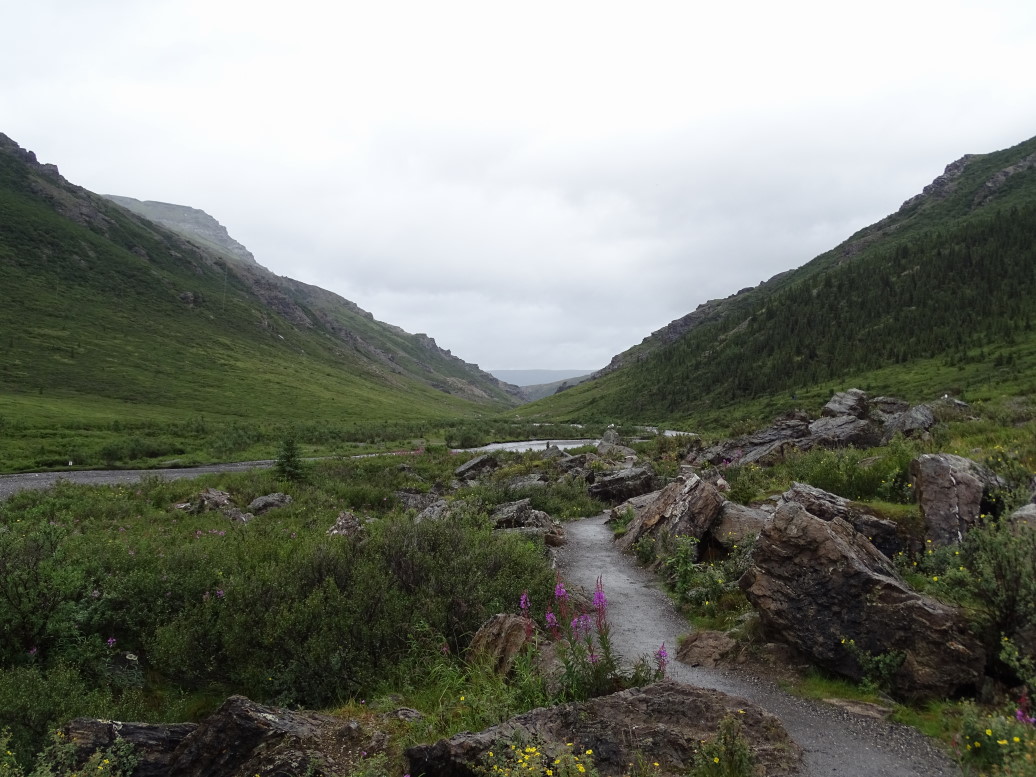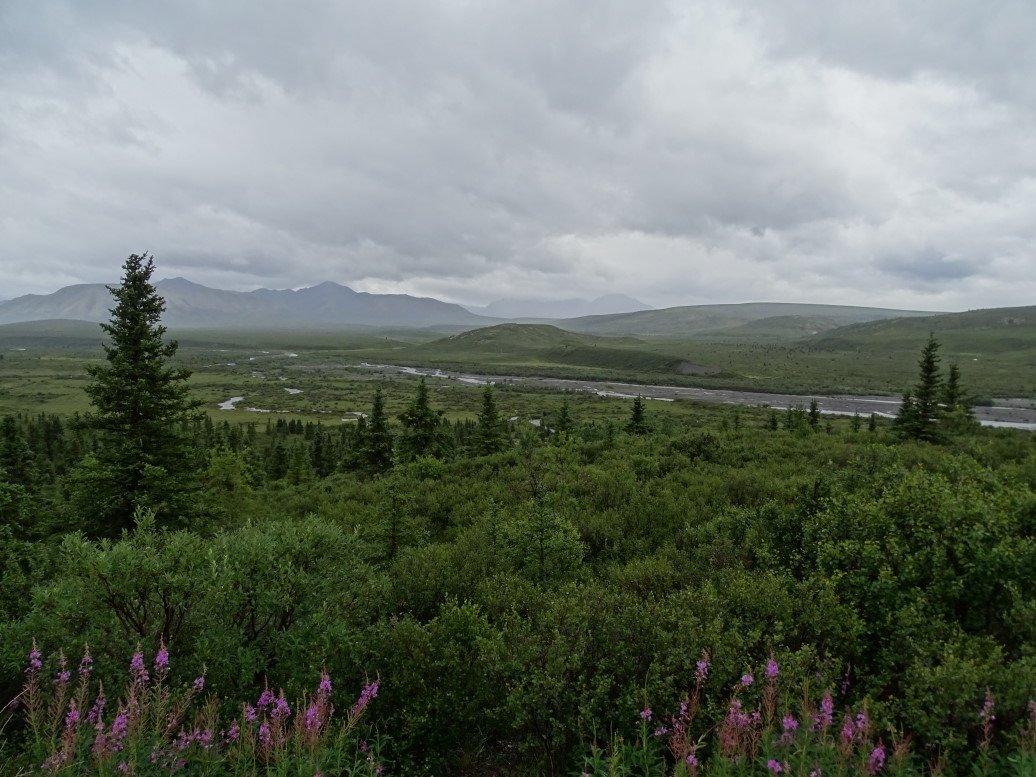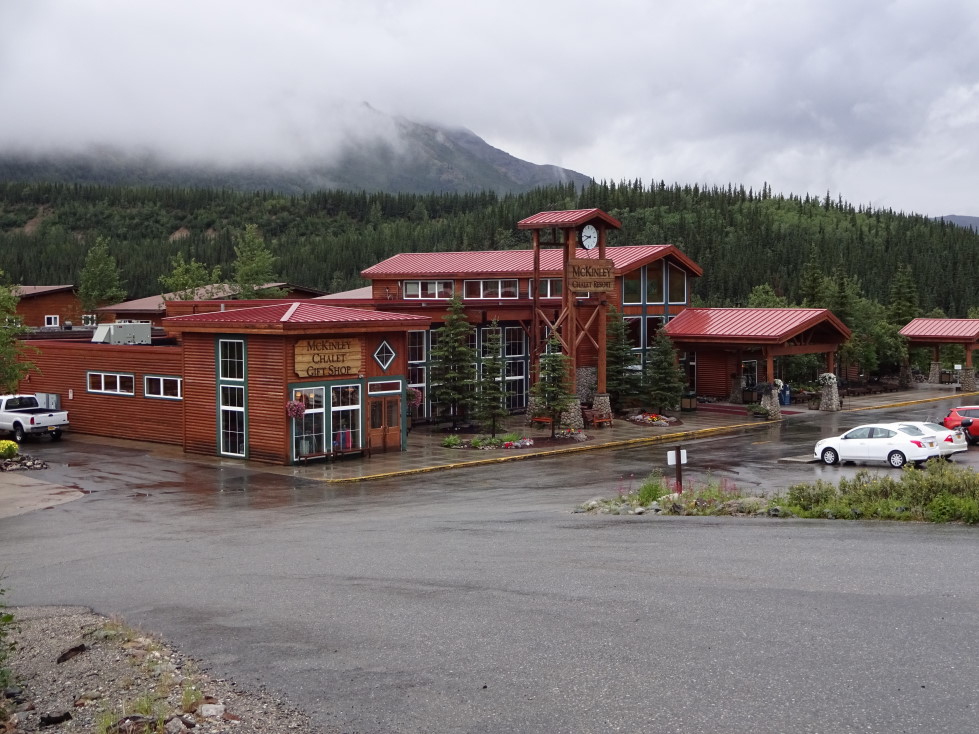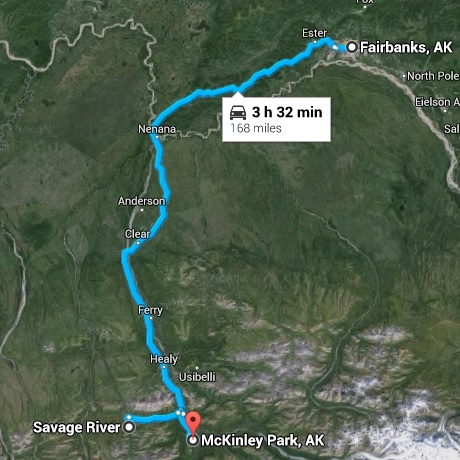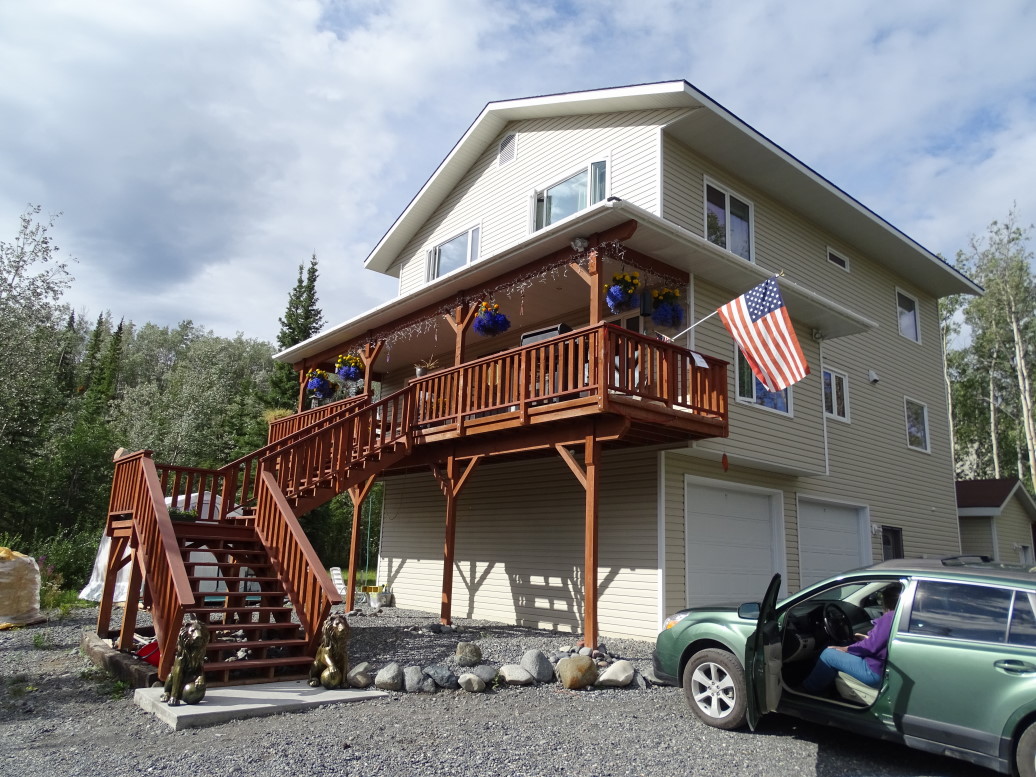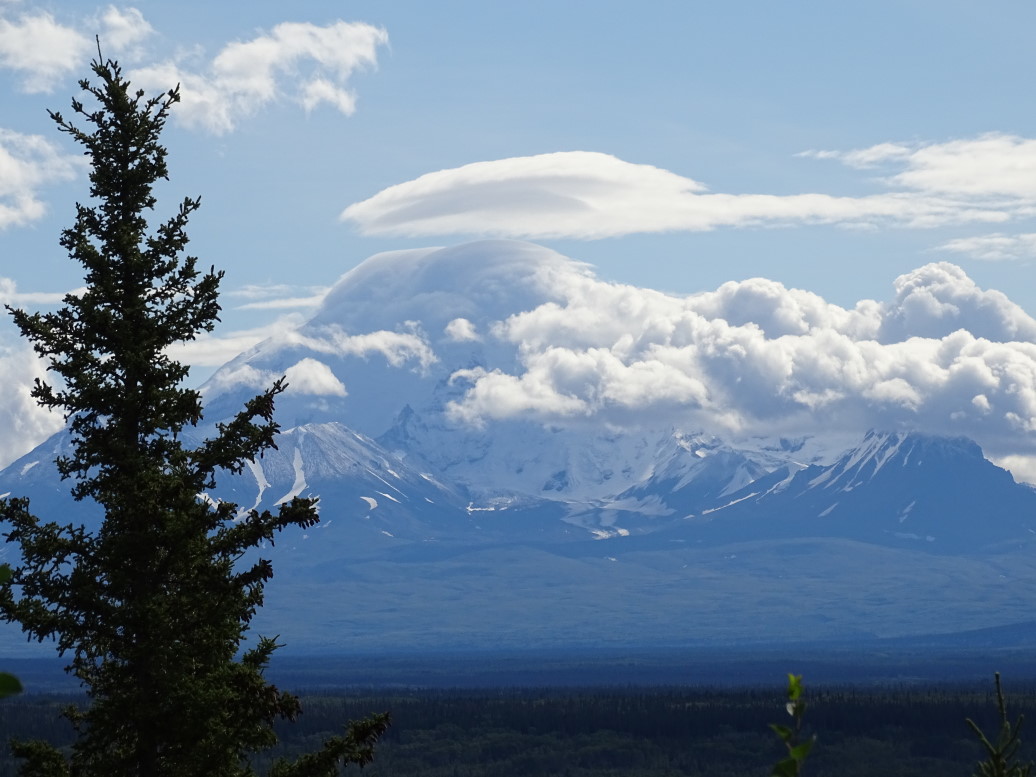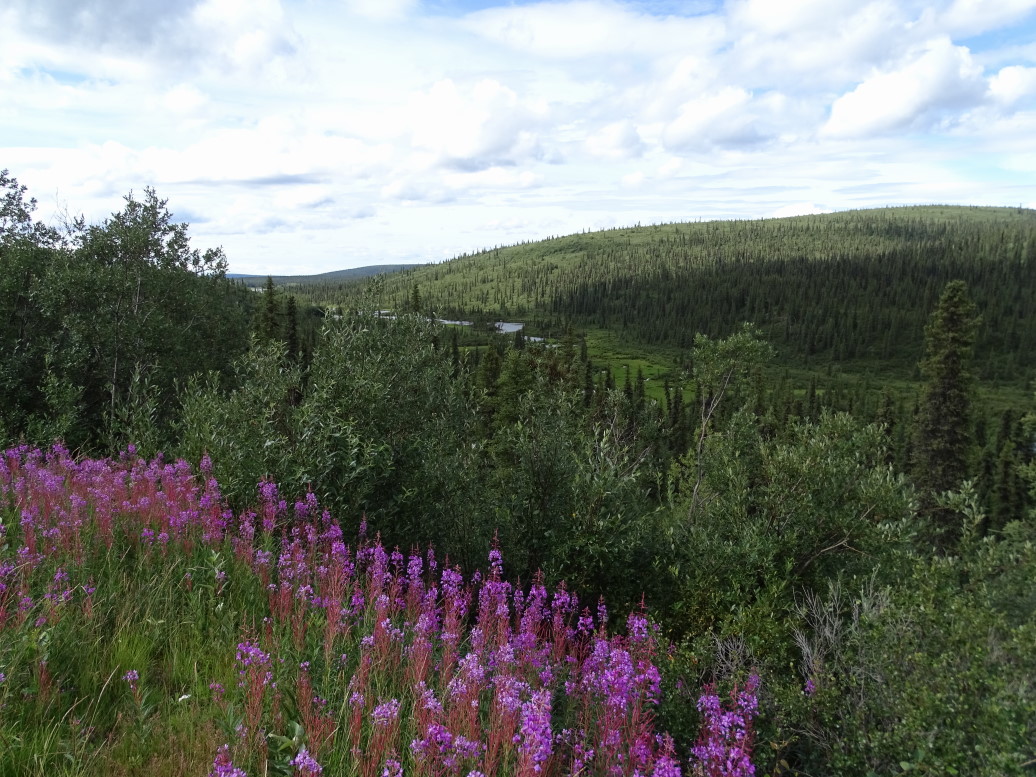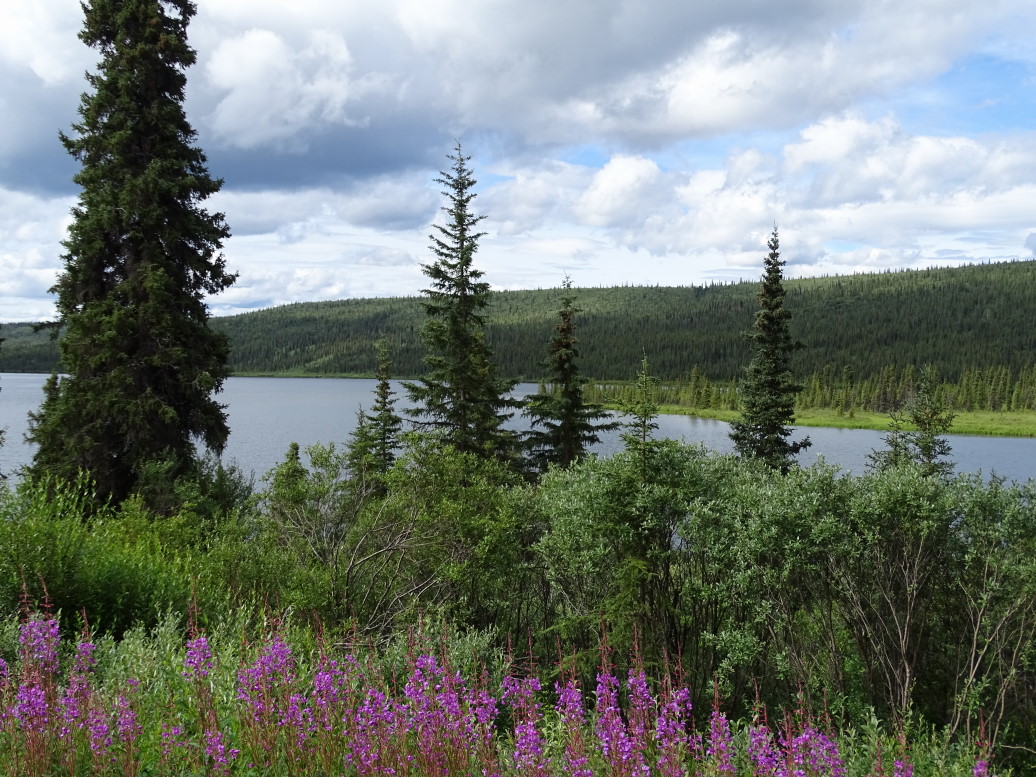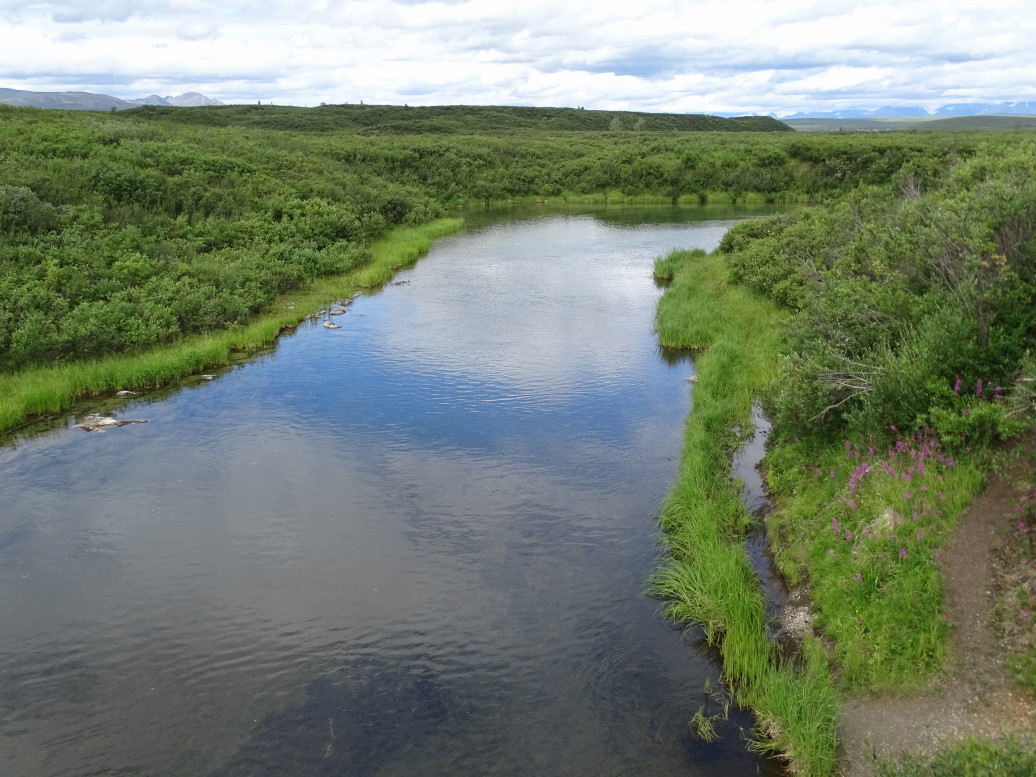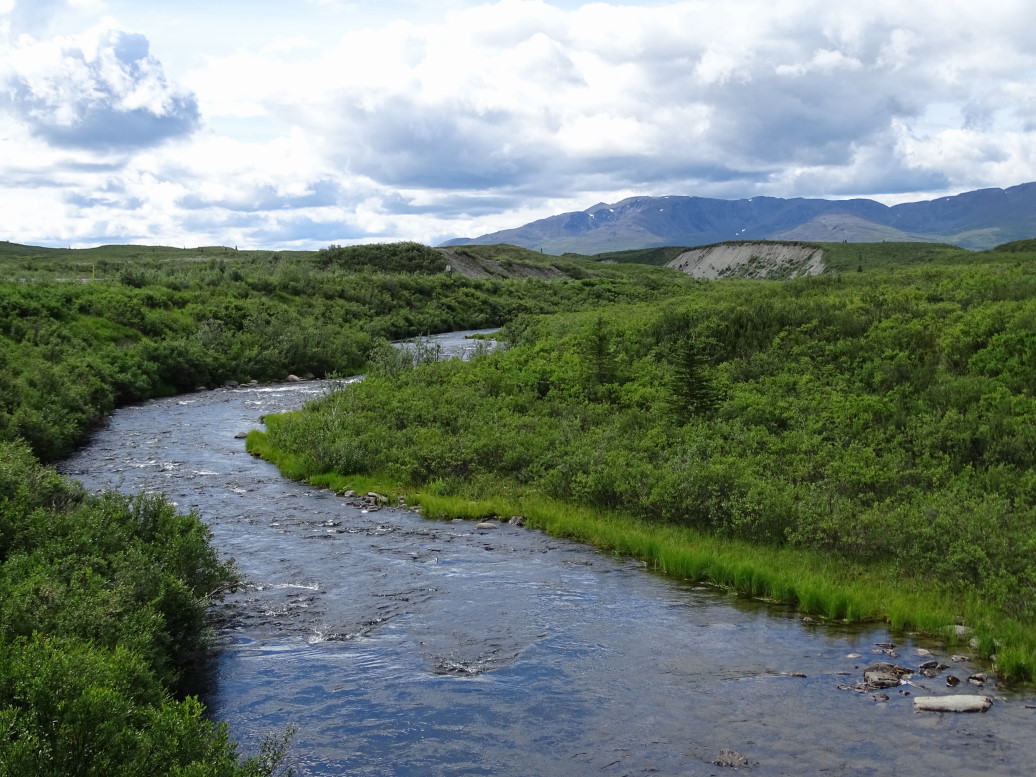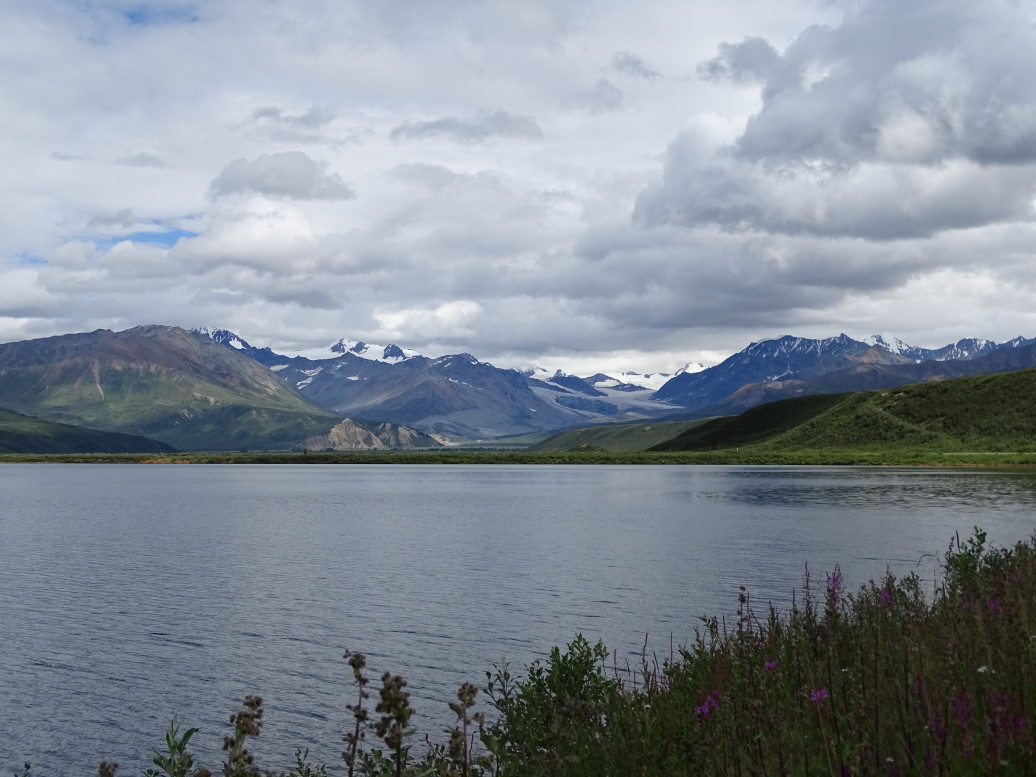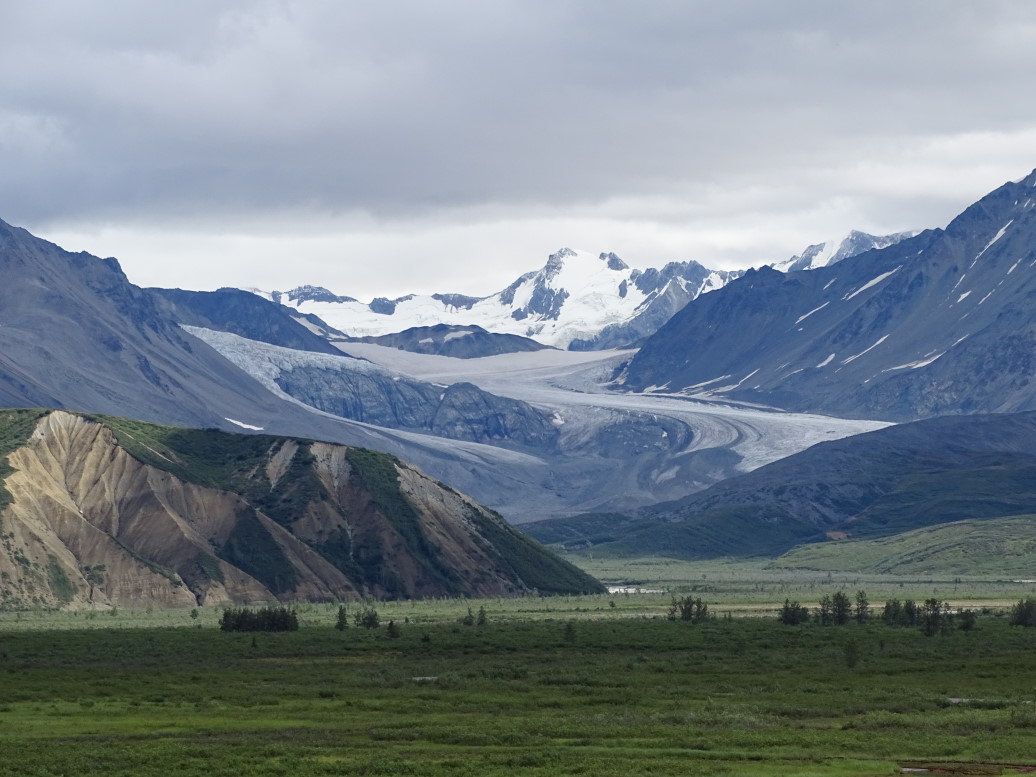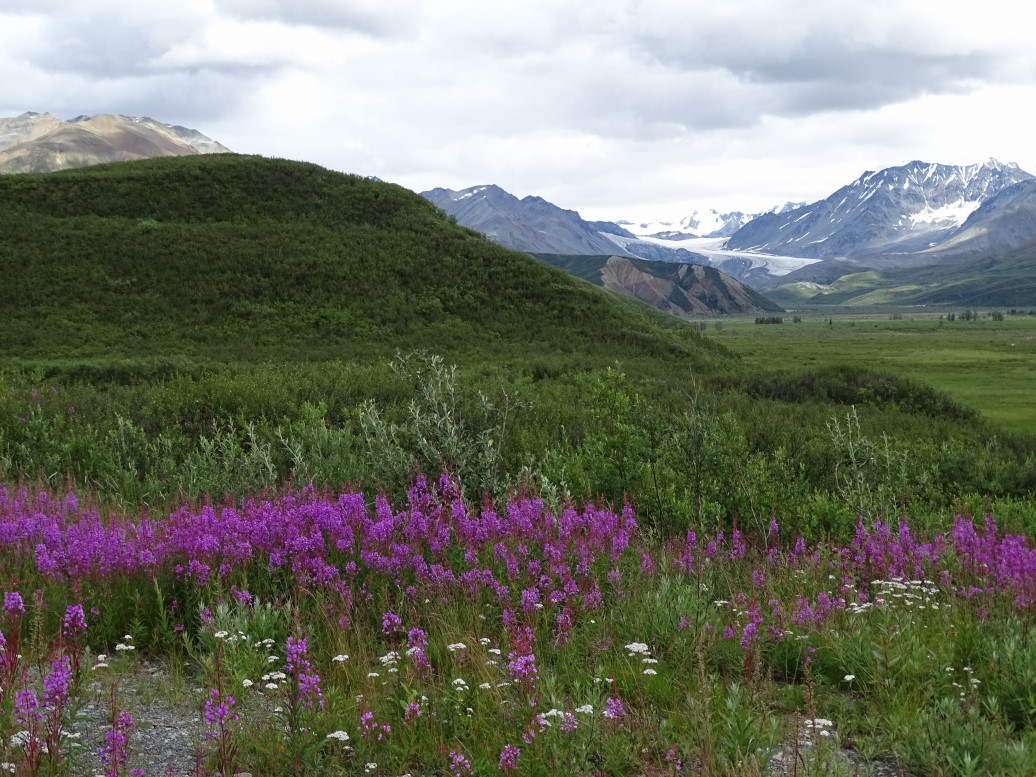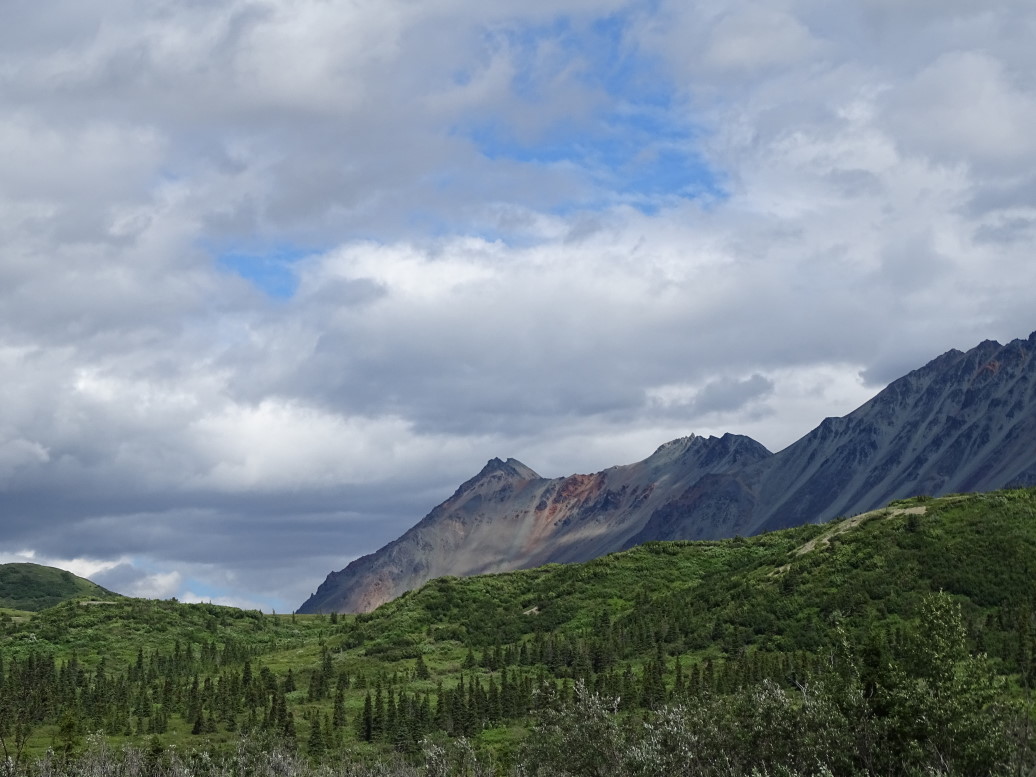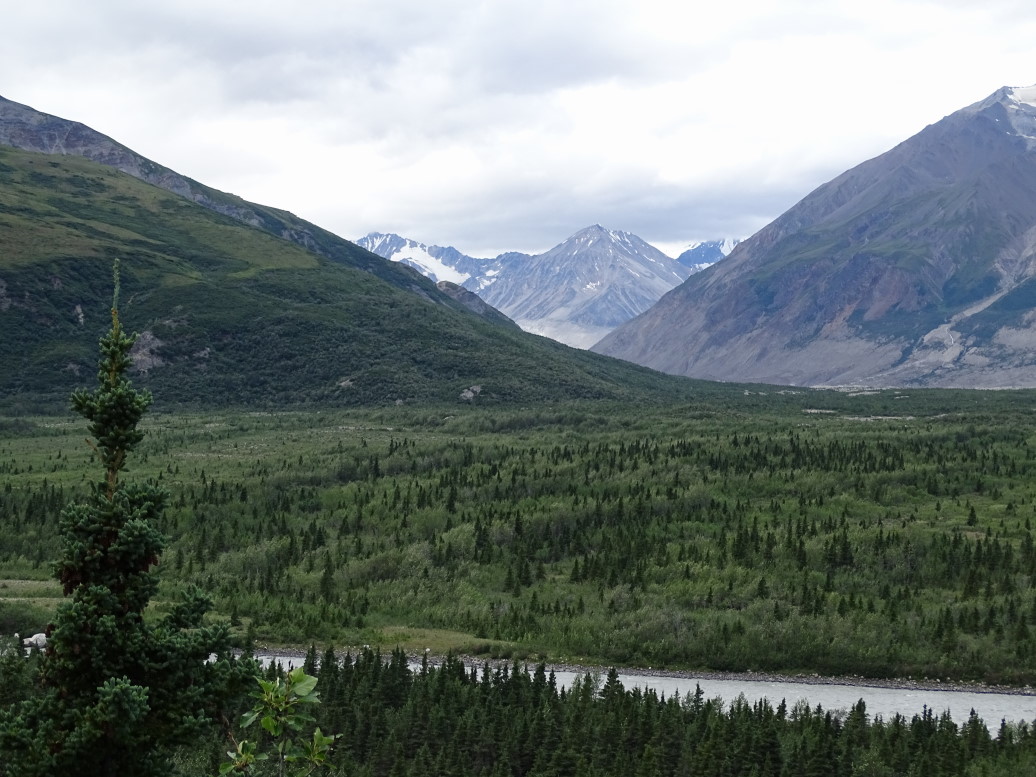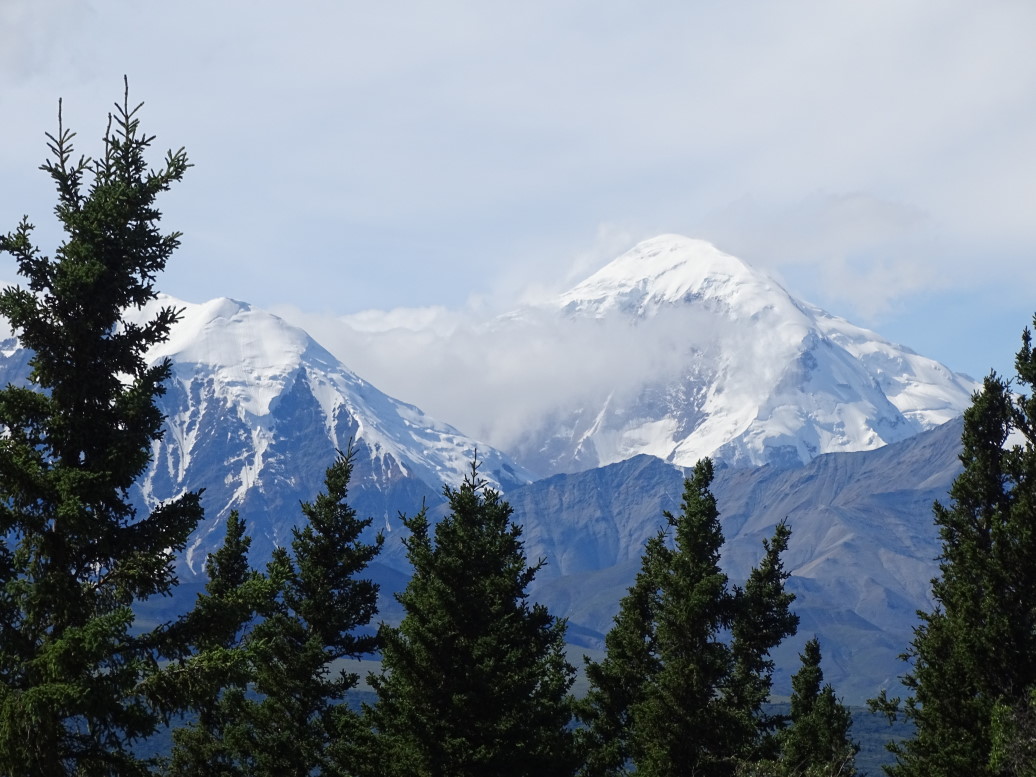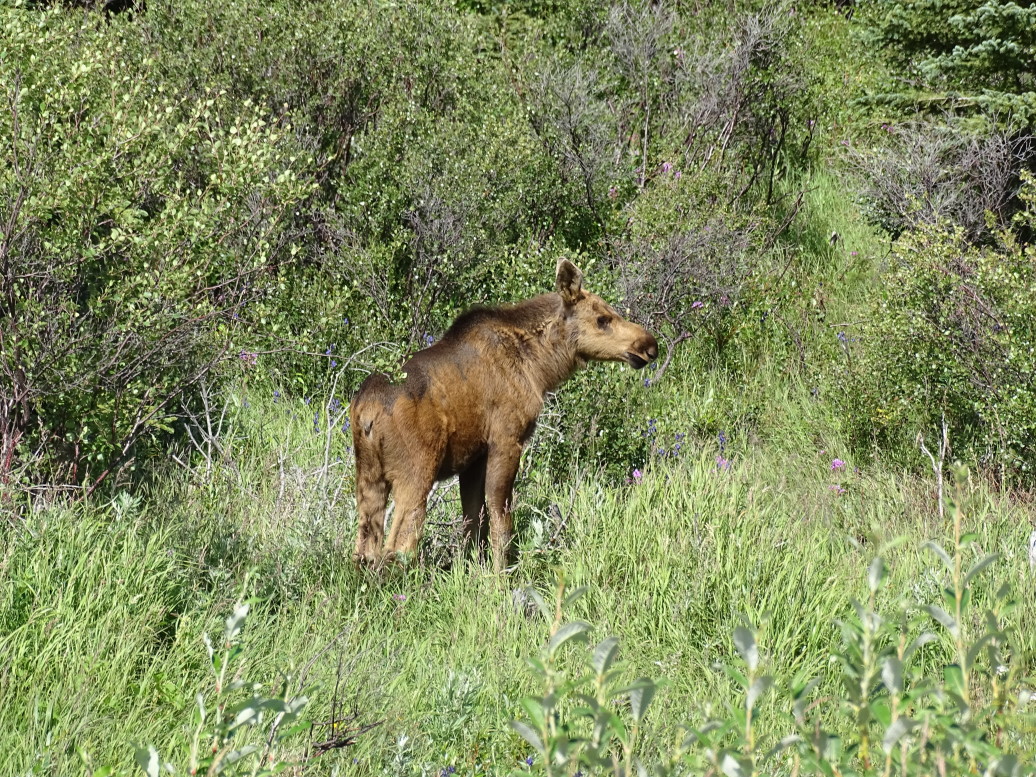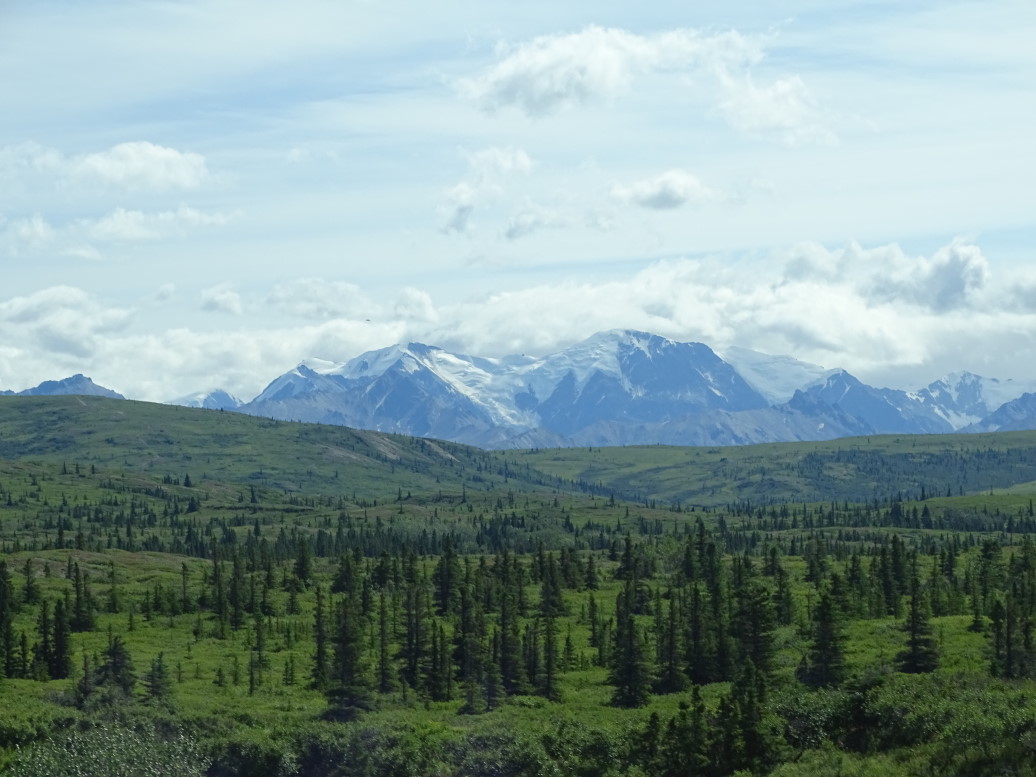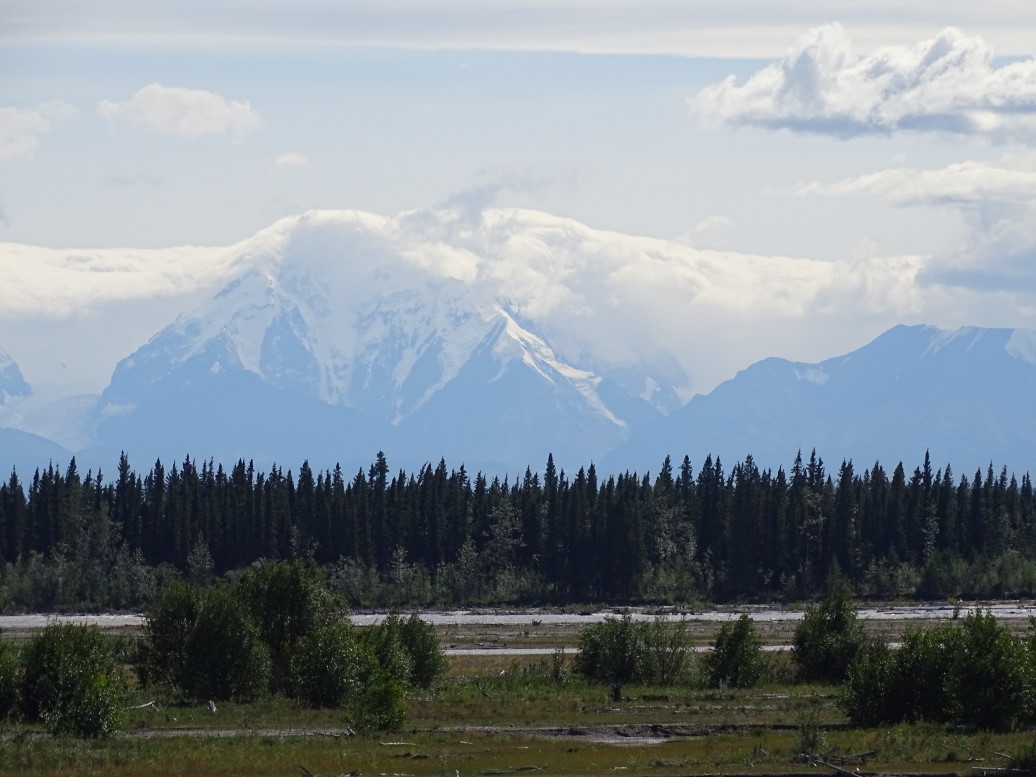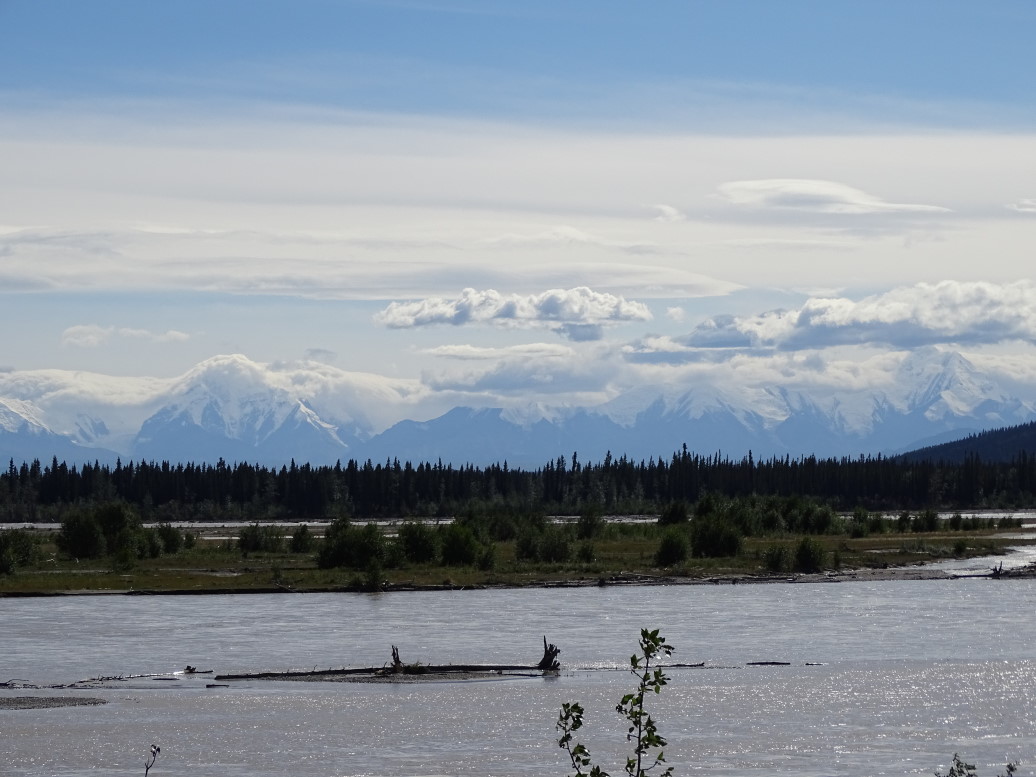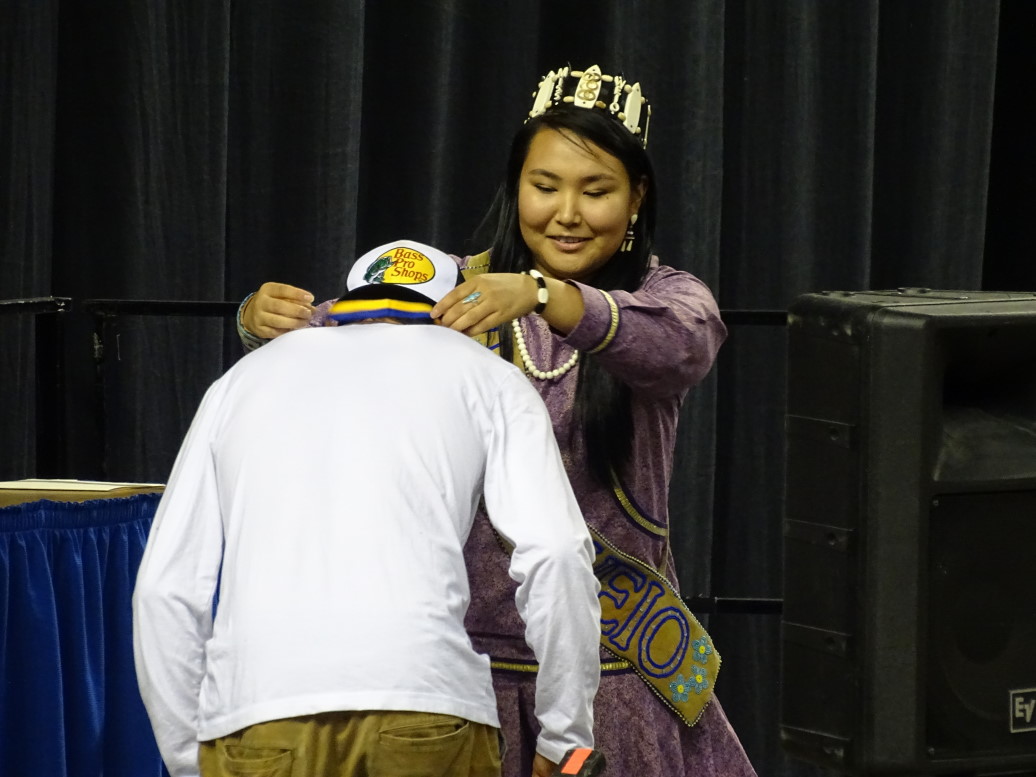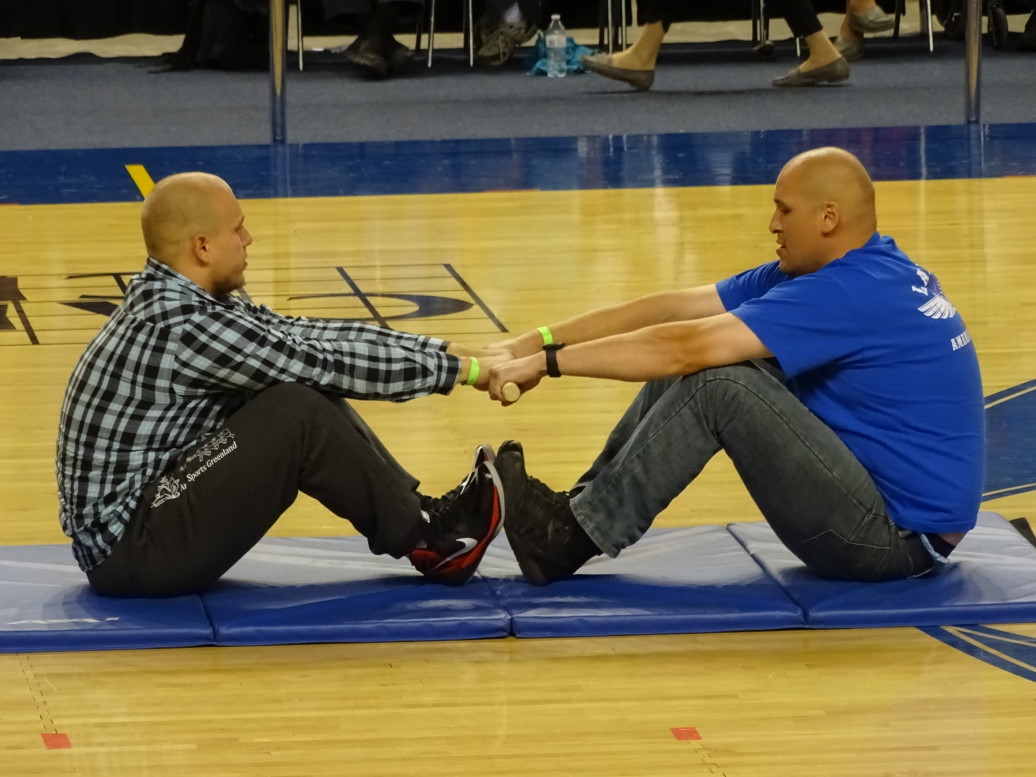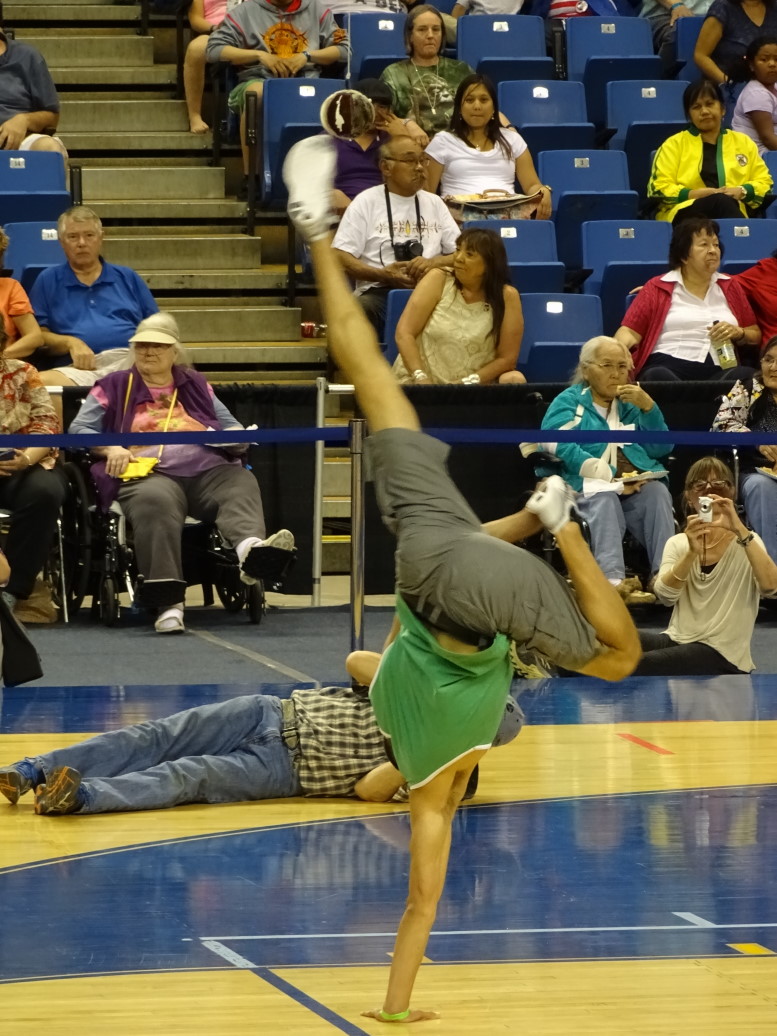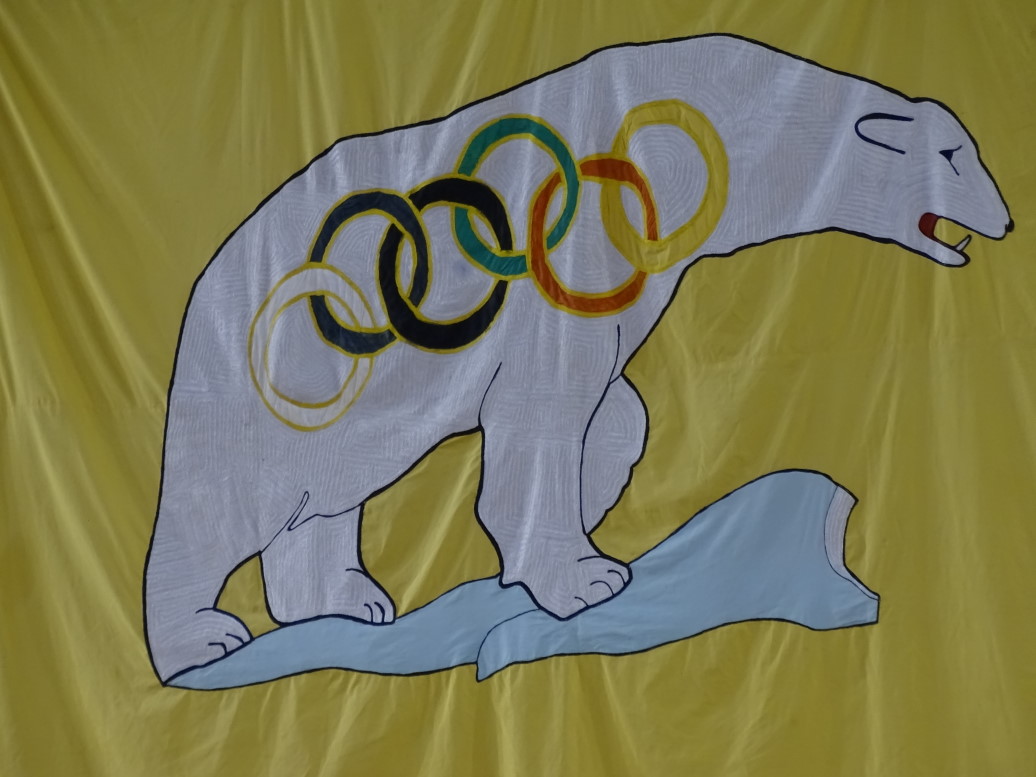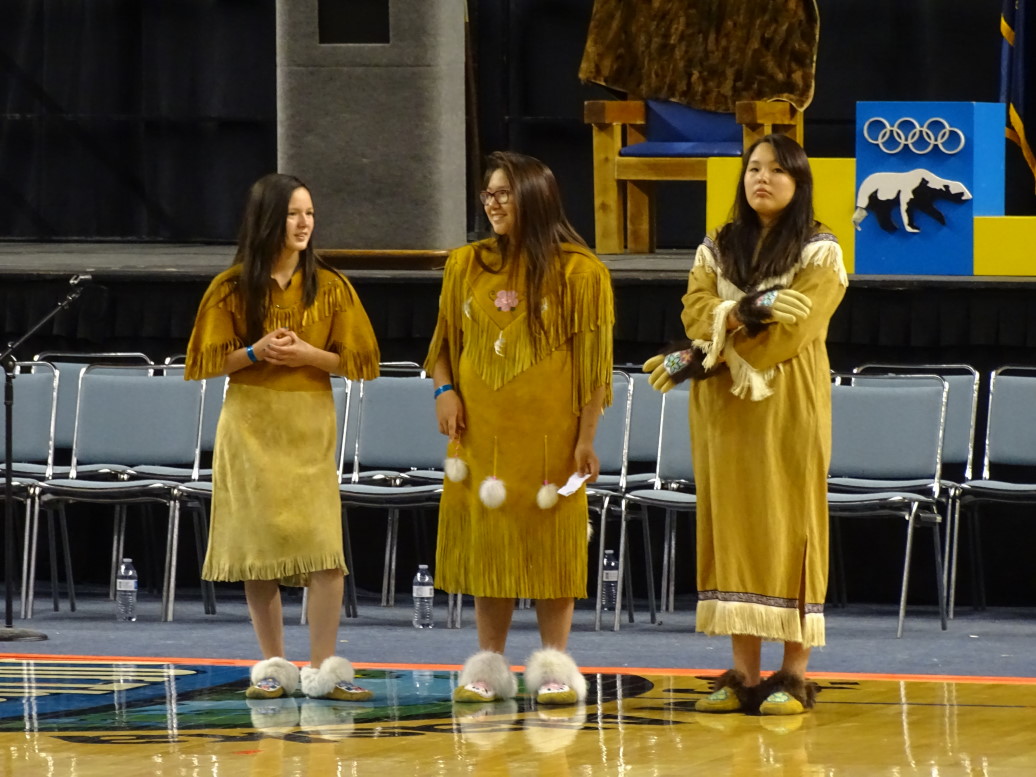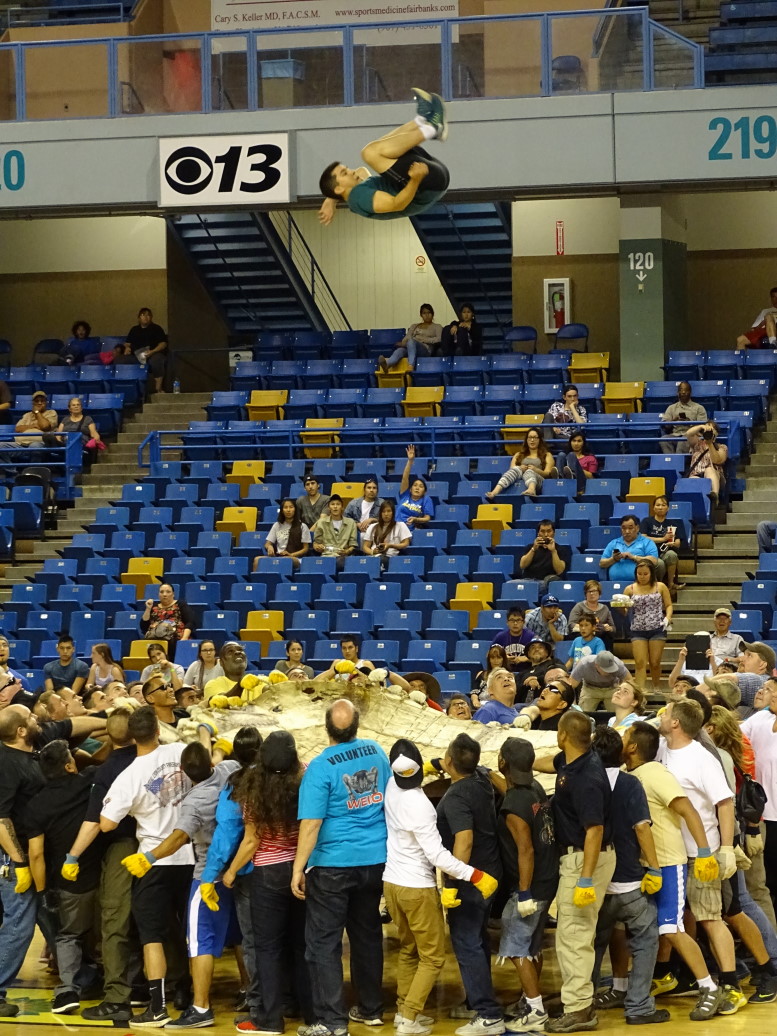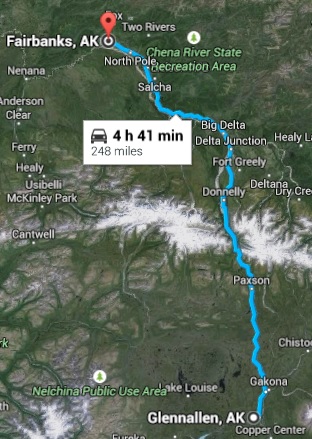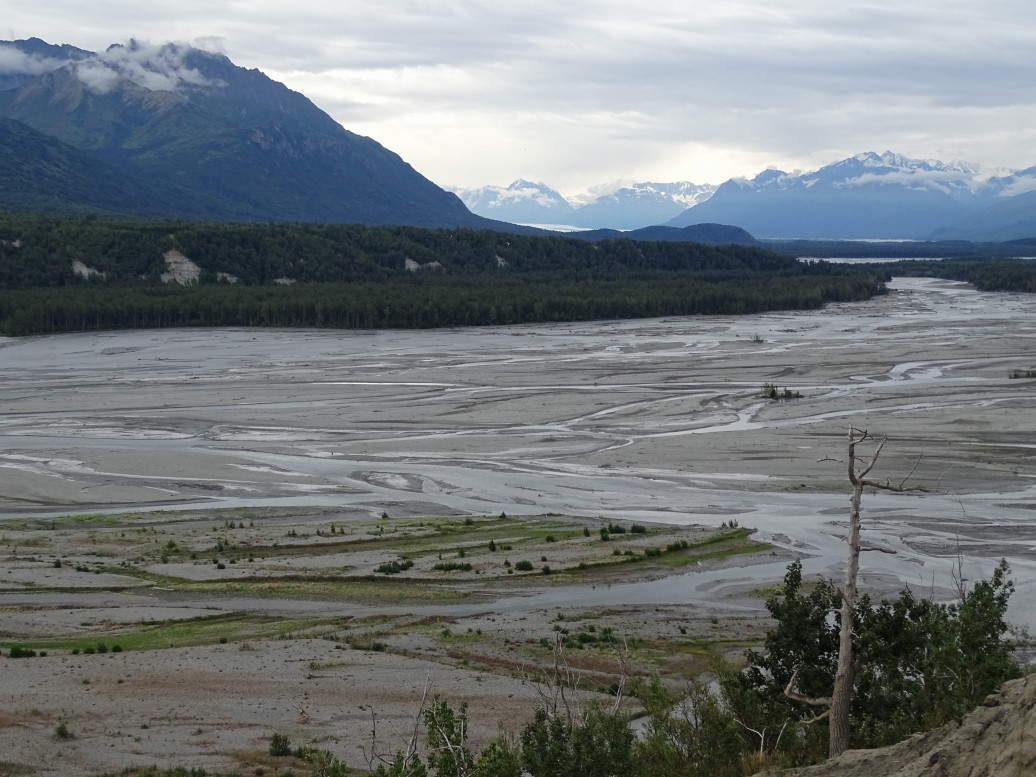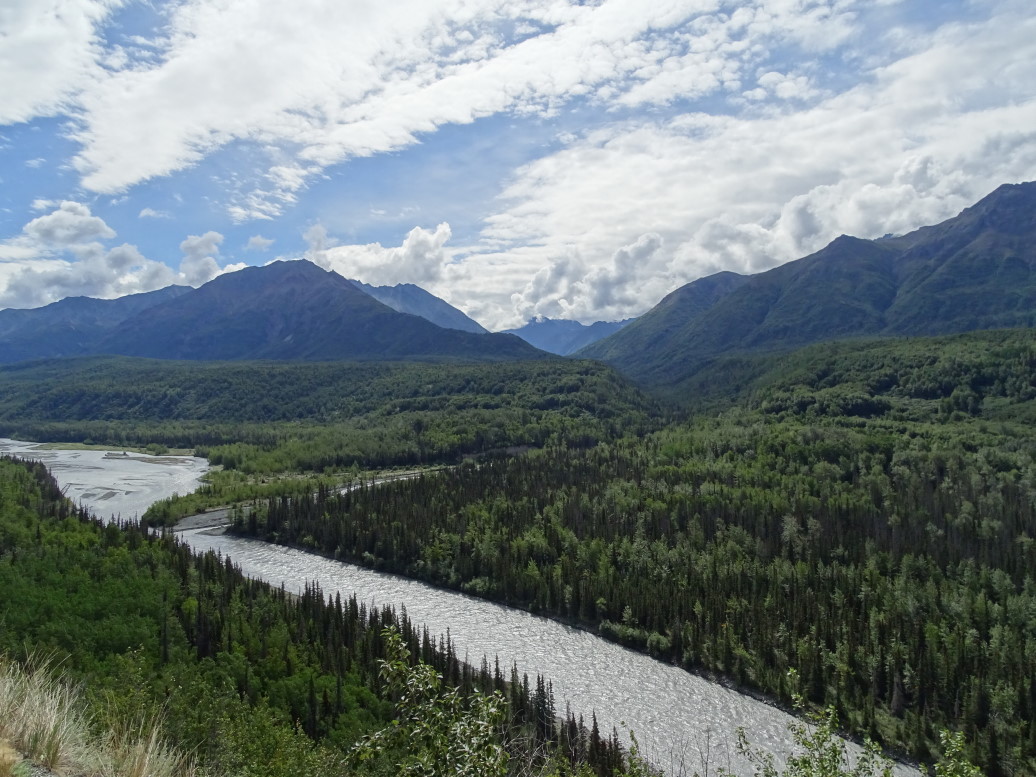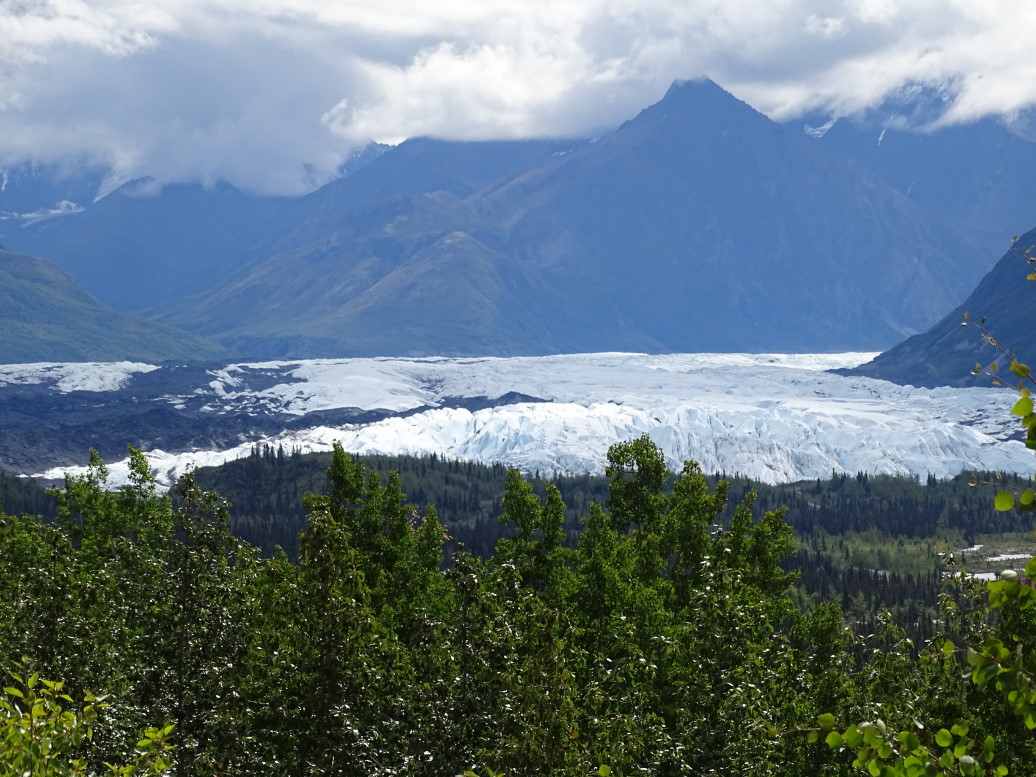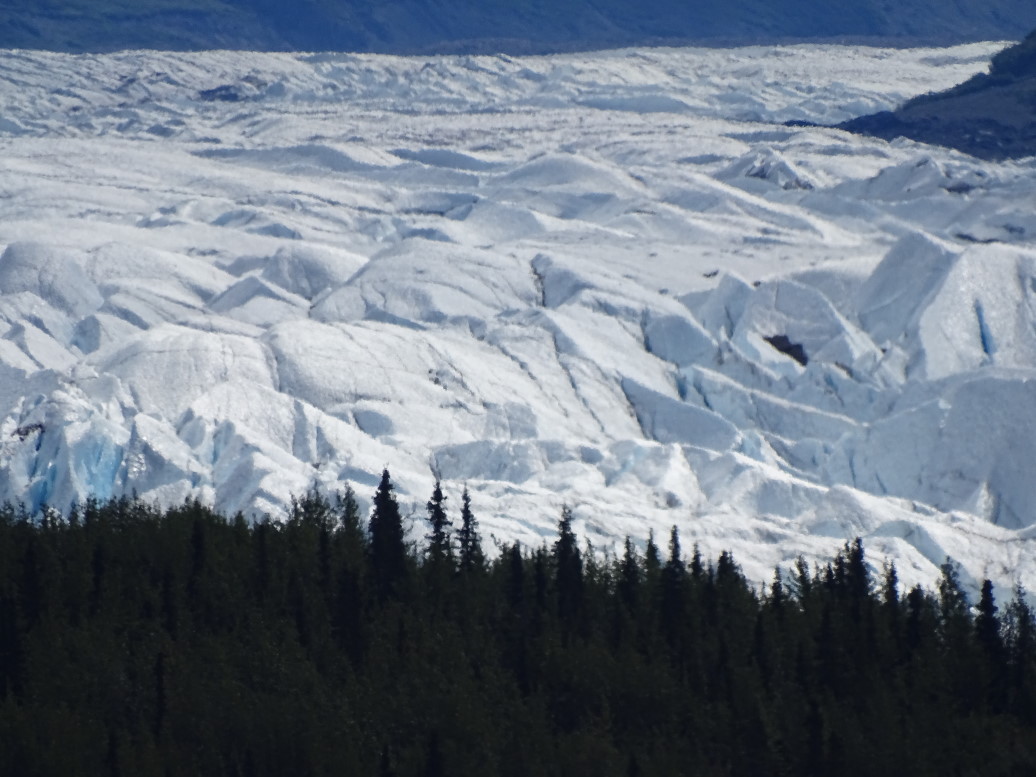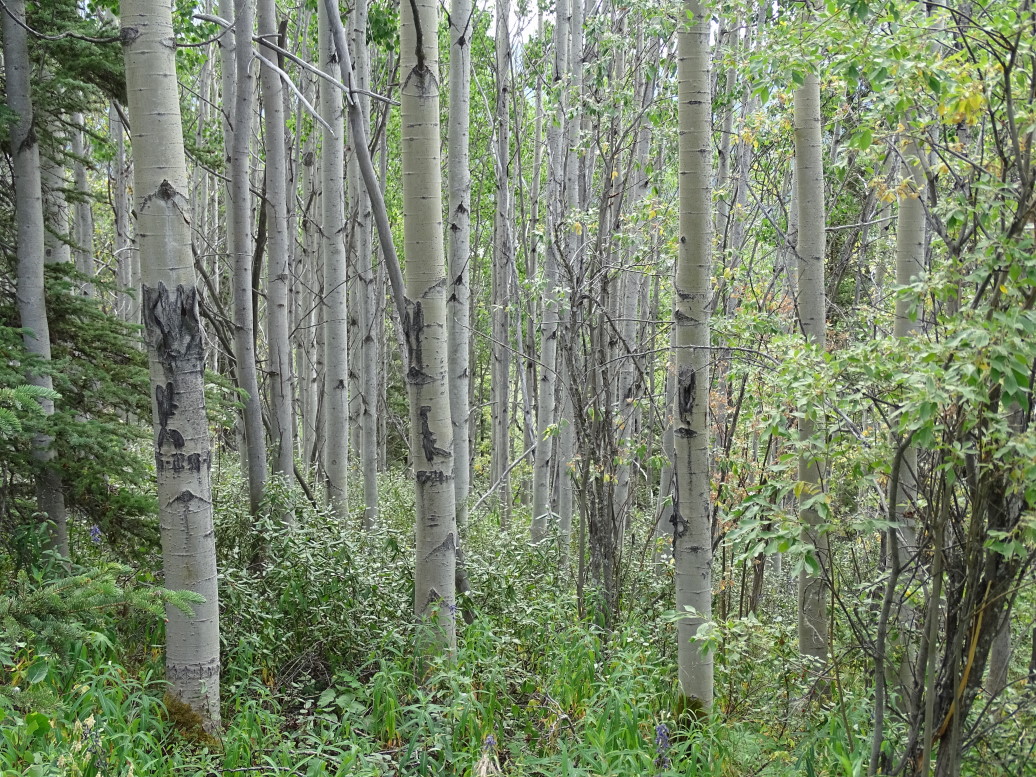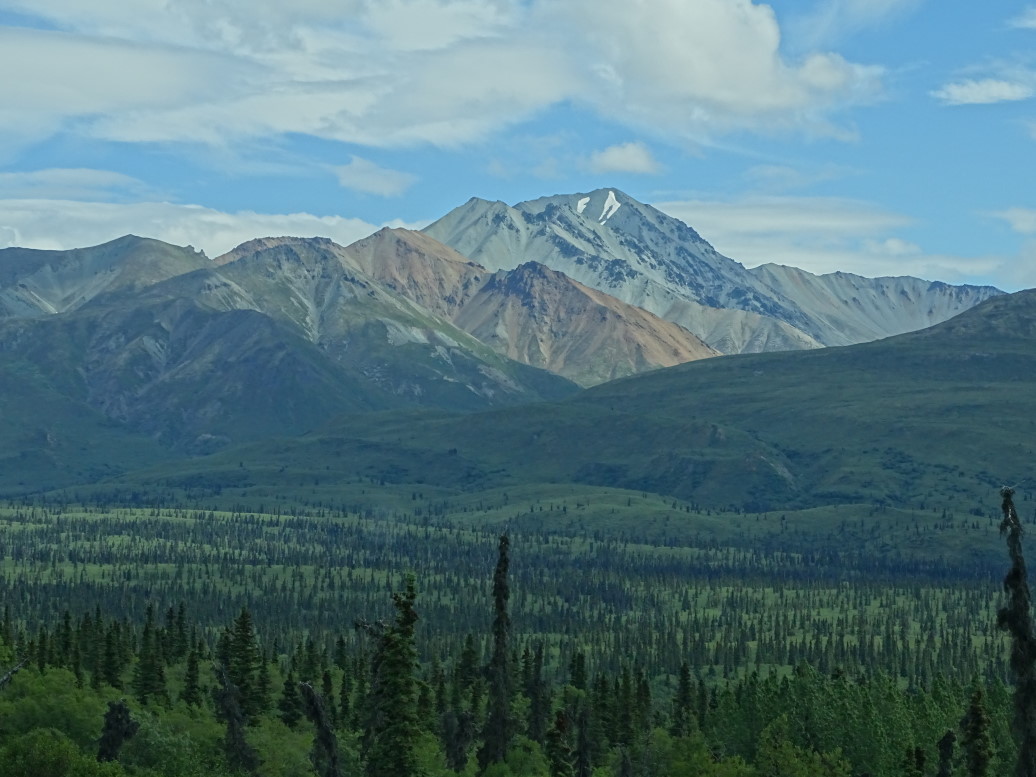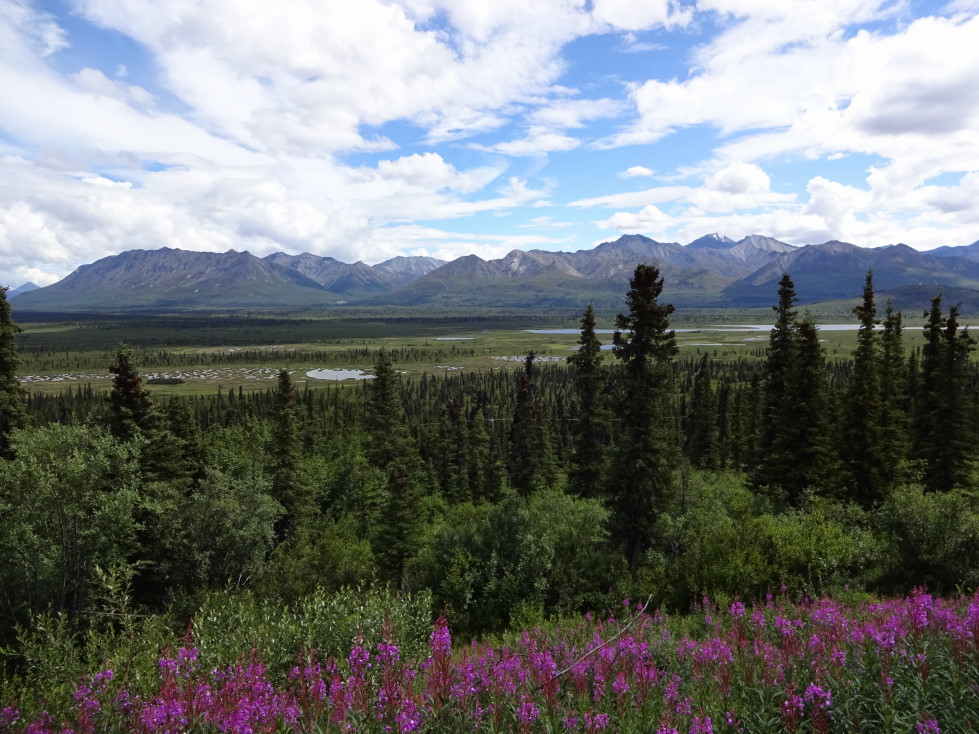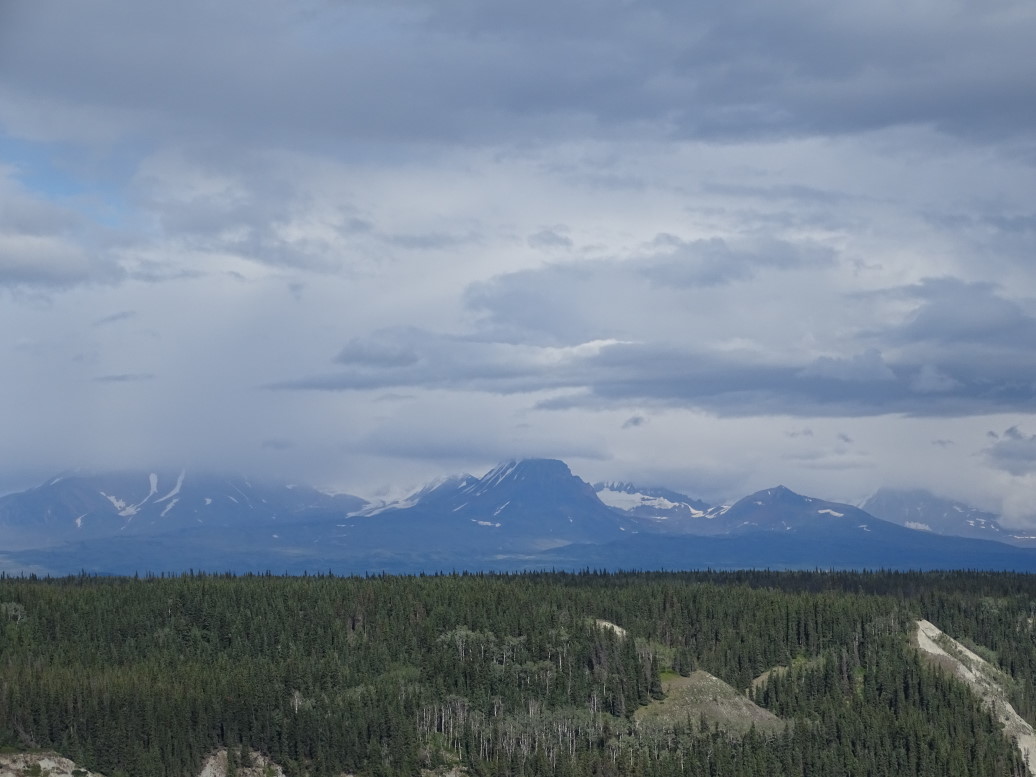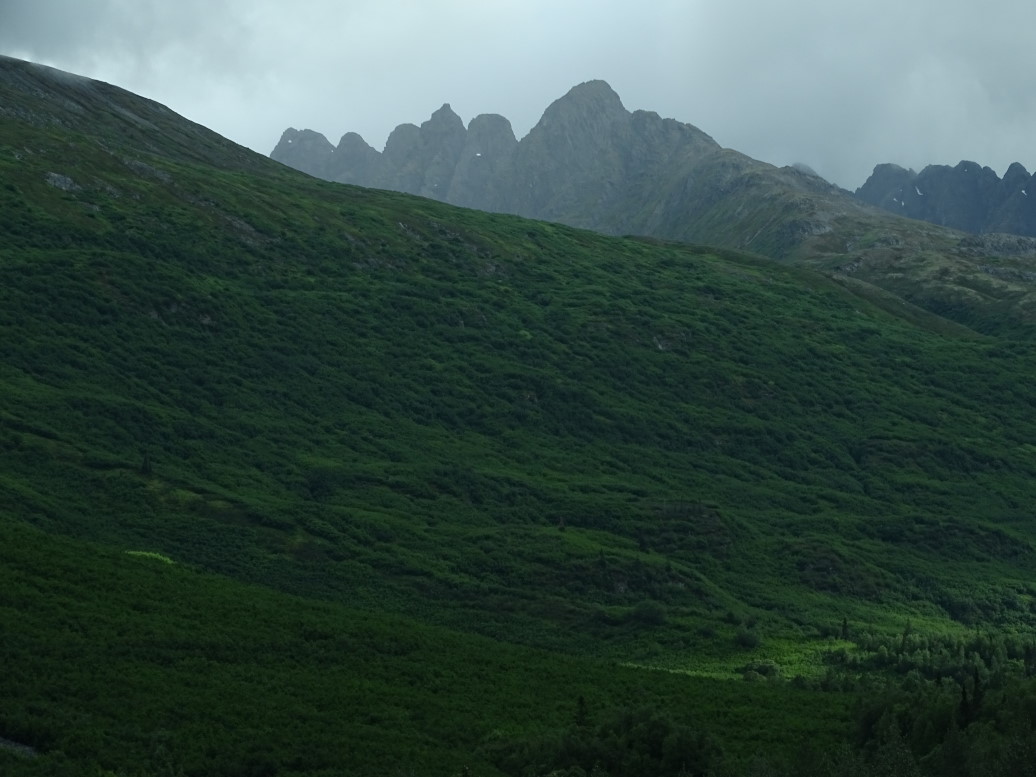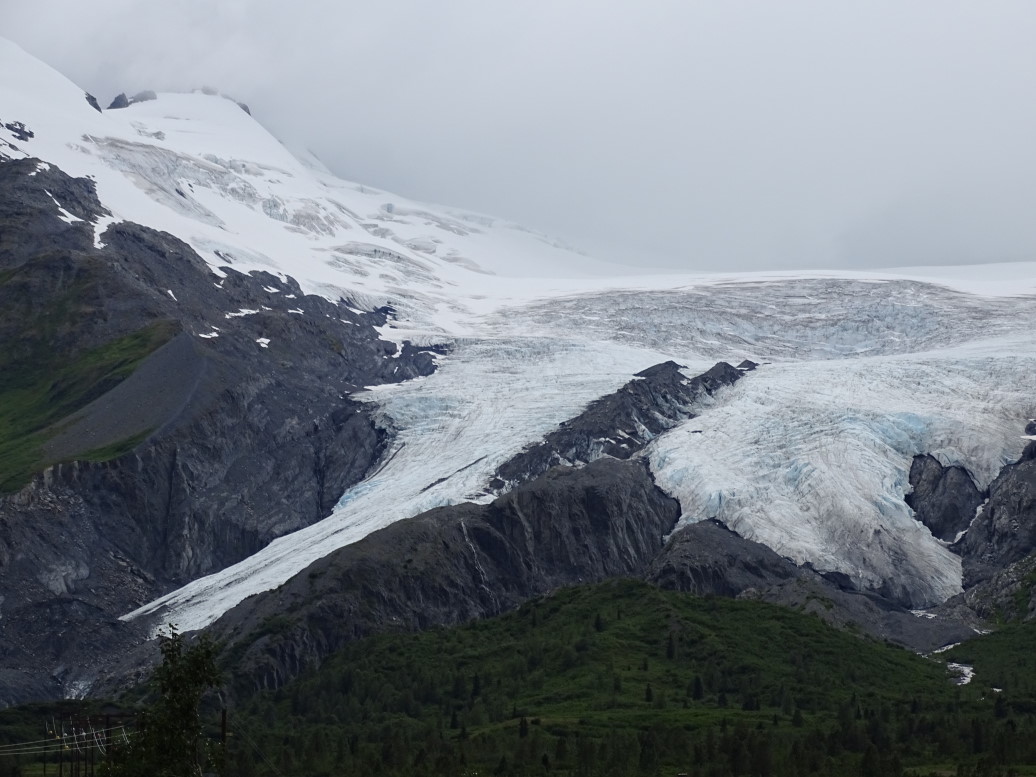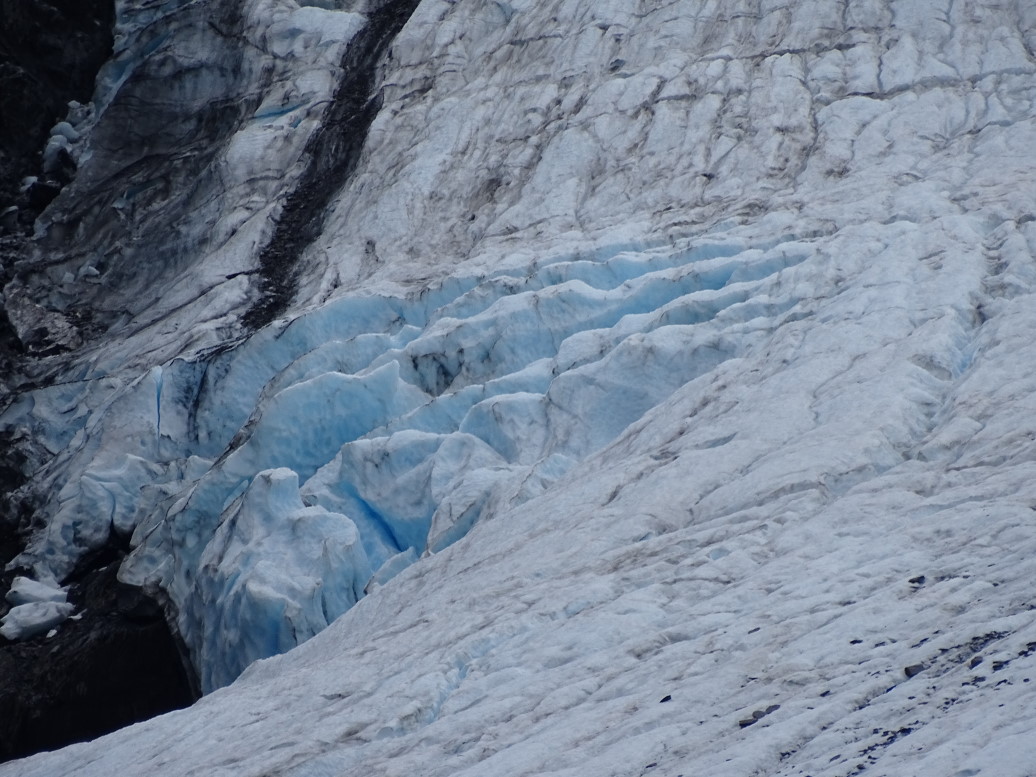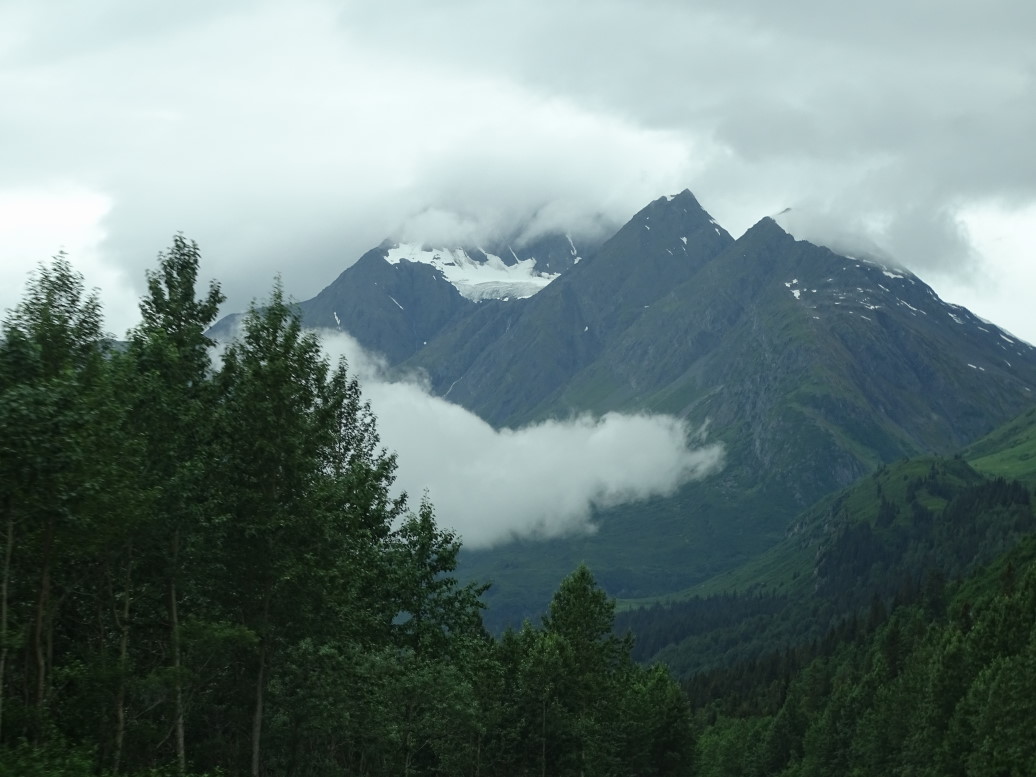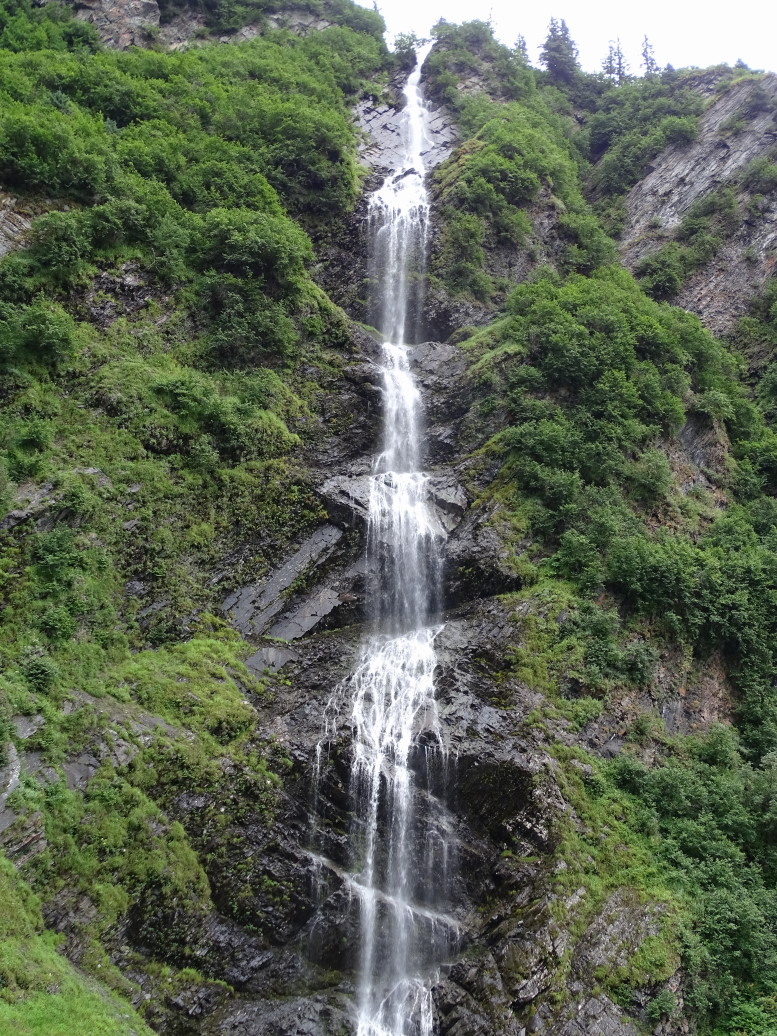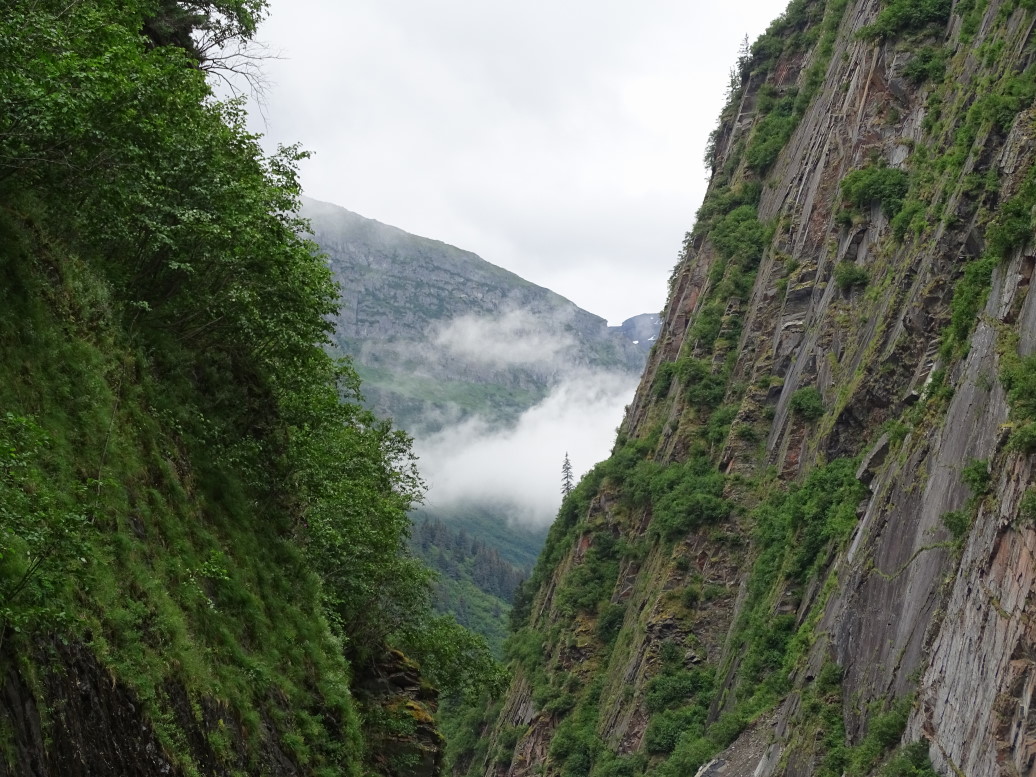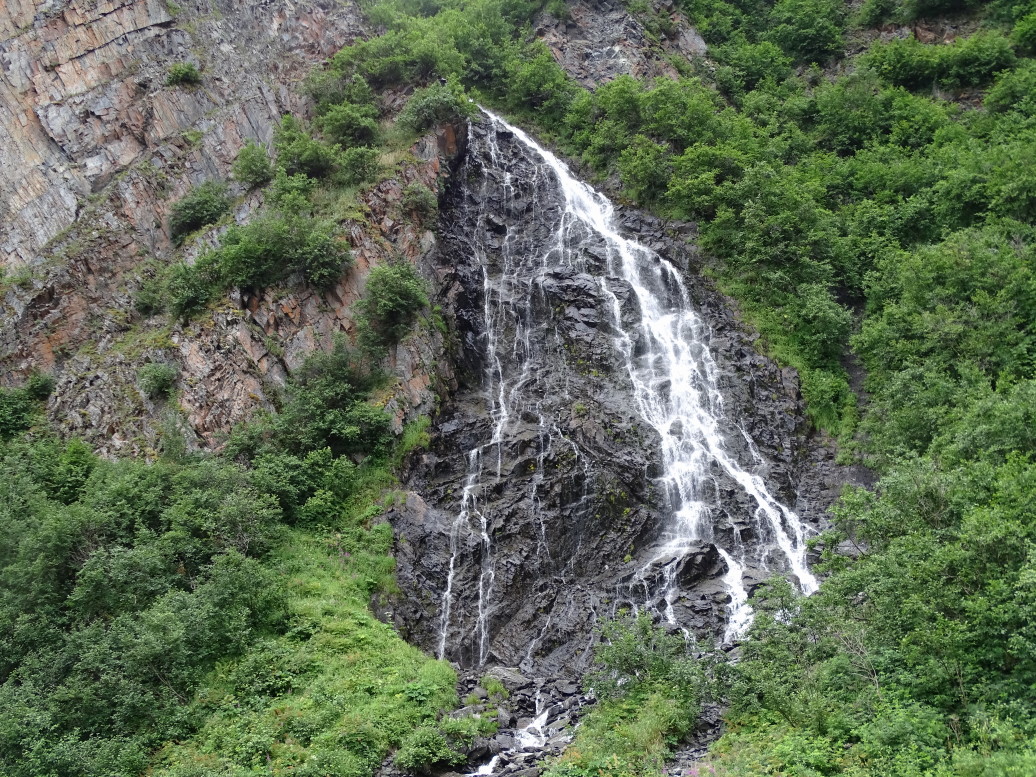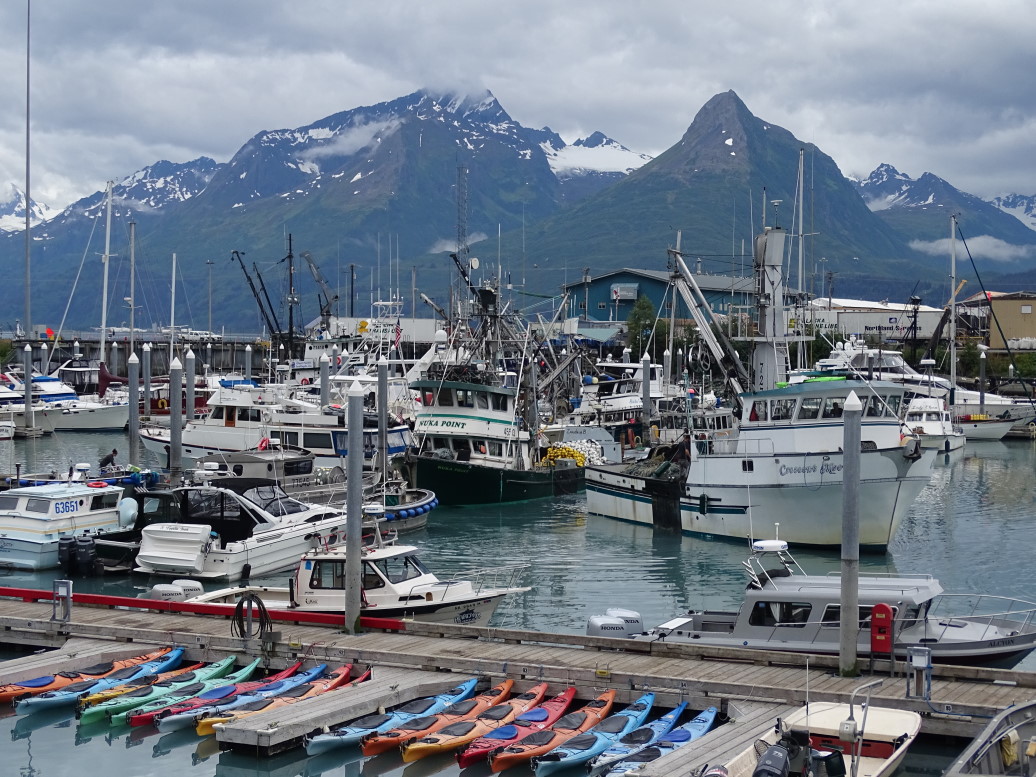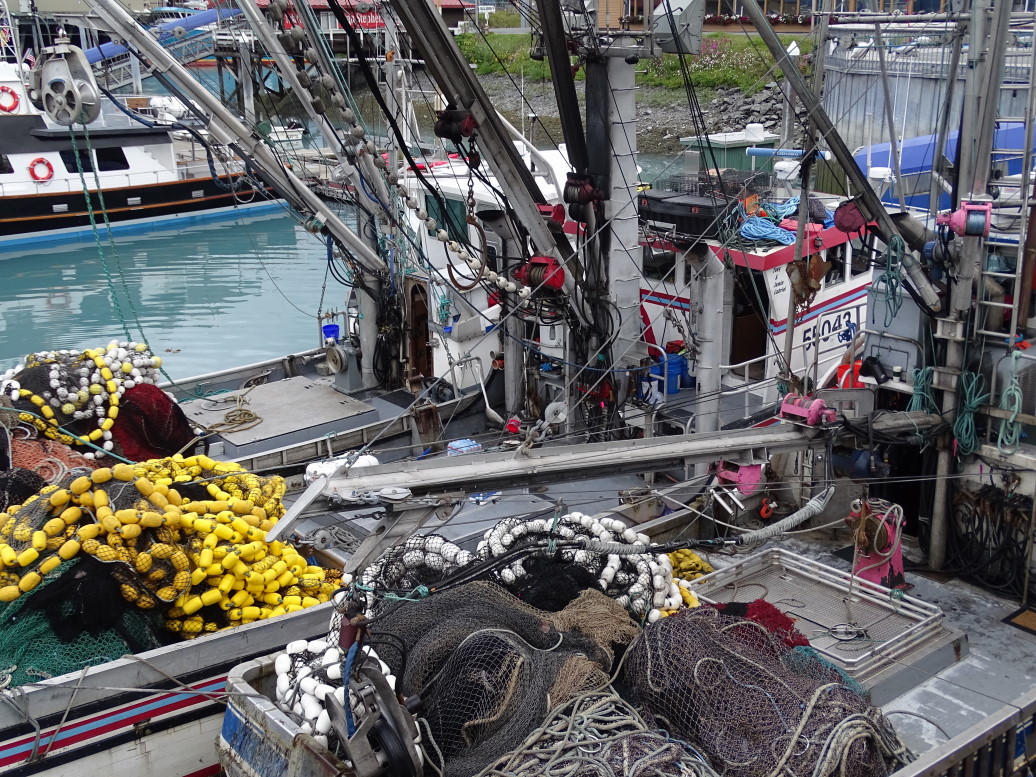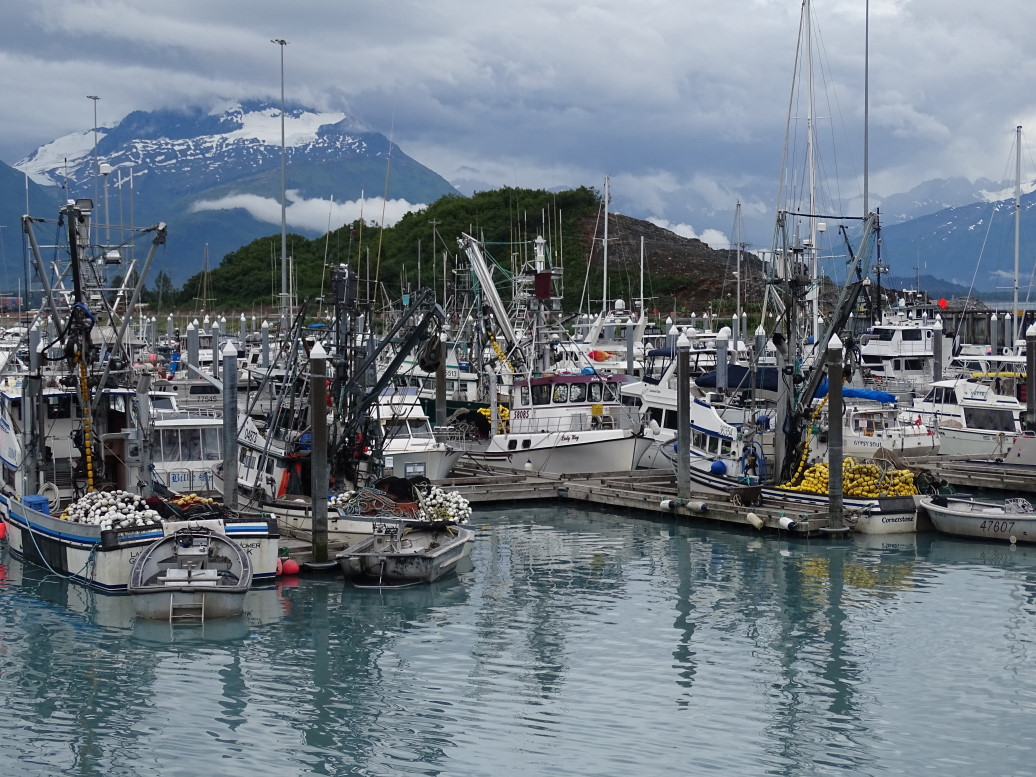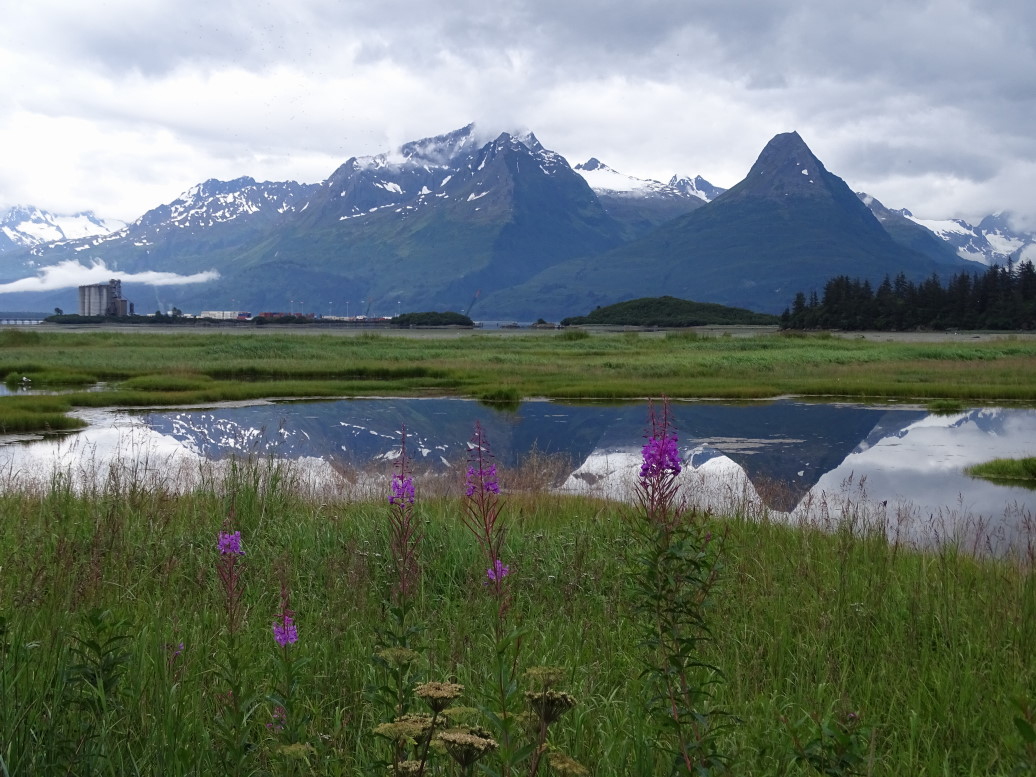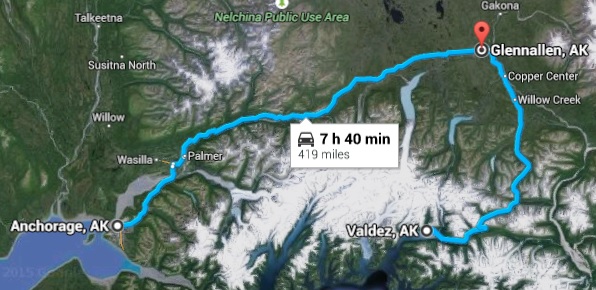We awoke early, around 5a. Got ready, packed, and went to the hotel’s restaurant for breakfast buffet. It was pretty solid, decent enough eggs and bacon and cereal. Checked out and headed to Denali National Park’s Wilderness Access Center for our bus tour deep into the park.

Stained glass in the Wilderness Access Center showing the Big Five: grizzly, moose, Dall sheep, wolf, and caribou
The bus tour is essential as private vehicles are not allowed past mile 15 of the 92 mile long road. While there is a view of Mount McKinley (still the official name, despite it almost universally being called Denali today) and the potential to see wildlife there are much better views of the mountain (at 20,300+ feet the tallest in North America) and many more chances to see wildlife going with a tour.
The tour bus is like a school bus, with all that goes with it — bumpy, not very comfortable, and not great legroom. The view can’t be beat, however, so… Our guide was Bryan. While not an employee of the Park Service (he needed two more years of college and decided that wasn’t for him), he had been driving buses in the park for twenty-five years and was incredibly knowledgeable. He had a great speaking voice and a very philosophical outlook on nature and man’s role in it. We took an immediate liking to him and as the guide goes the tour goes.
In addition to discussing the history, both natural and founding, of the park he gave his thoughts on the “Into the Wild” story about Christopher McCandless going to a remote area north of Denali National Park and setting up camp in an abandoned city bus. Our guide was riding in the area when he was still alive and wishes he had stumbled upon him and could’ve saved him. Basically, Christopher got in over his head and bad decisions piled up eventually leading to his demise from starvation. While he serves as a lightning rod of controversy in the area and many believe he was off his rocker, Bryan identified with the primal need to get away from society and live simply in nature so was a bit more sympathetic.
Anyways, the weather wasn’t great — mid-40s to 60 depending on the elevation and everywhere from a light fog to pouring rain. So seeing the mountain was right out, despite being only 28 miles away and absolutely massive. We had heard that the mountain is only “out” about 30% of the time and people that had been in the park for the past few days remarked that they’d yet to see it either. In fact, a guide in the Eielson vistor center we stopped at around lunch time remarked that 50% of those setting out to summit the mountain succeed, whereas only 30% that visit the park see the mountain. Obviously not apples to apples but funny nonetheless.
Soooo, with the weather crap and the mountain playing a great game of hide-and-go-seek… How were the animals? As the Ranger that boarded our bus later in the day said “Crappy weather makes happy bears”. And how!
Denali National Park has a list of the “Big Five” mammals: Dall Sheep, Moose, Caribou, Grizzly, and Wolves. Moose are stupid common, Dall Sheep aren’t too hard, Caribou aren’t either, Grizzly are pretty common. Wolves are rare, Bryan estimated between 1 in 30 or 40 buses see one.
We started out seeing a couple of moose cows (thanks Mom for the assist on female moose terminology). Then we saw a wolf. I only saw it dart into the bushes to the right side of the road and missed it coming back across the road but Genetta and Michelle got a great view (looks like a “skinny dog”, basically). A bit later we saw a couple of grizzlies, then some Dall sheep high on a mountain, then another grizzly, then some more sheep, some caribou without antlers (don’t know whether male or female — both have antlers), some more moose (this time bulls with impressive antlers!), a grizzly going to town on some berries, and finished up with two separate caribou with amazing antlers, both of which crossed the road right in front of the bus.
Most of the animals were several hundred yards away (with the exception of the sheep, much farther on steep steep slopes) so I was very happy I bought the new camera that could zoom much better than my older one. The super zoom makes for some blurry images at maximum, however, I apologize for that. The new binoculars also came in very handy.
Denali is essentially untouched and as it has been for thousands of years. Other than the single road there is no other development in the park and the number of visitors allowed beyond mile 15 is extremely limited. It almost felt like Jurassic Park at times, cruising through the park and seeing the animals and nature nearly completely undisturbed. I don’t want to give the impression that there were herds of thousands of caribou or anything like that, however. It is important to note that Denali is, in general, a pretty hostile environment for not only humans but also animals. It is mostly tundra and the food system is simply not there to support huge herds or even large groups.
We stopped at several rest stops and the Eielson visitor center along the way. The visitor center had a guide talking about various attempts to scale the mountain (about 50% make it as I noted earlier, and the mountain itself claims about 1 in 300 climbers). Permits are extremely limited and Denali has many more protections in place than Everest, making it in some ways a nearly as challenging climb. For instance, climbers of Denali are not allowed to use oxygen (due to discarded canisters that litter Everest) so an extended period of time (about a month) must be spent getting acclimated over time. Also all waste, including human waste, must be transported off the mountain.
The visitor center was prepared for the fact that 70% of visitors will be greeted by a fog bank instead of a view of the mountain so had places marked on the floor for various heights and corresponding silhouettes of the mountain painted on the window that show where the mount is. Kind of cruel, if you ask me, haha.
We picked up a ranger at Wonder Lake (which 30% of the time has spectacular views of Denali reflecting in the lake) who led us on a walk to the Anderson homestead (now burned) in the Kantishna mining district. The Andersons were great neighbors to the park (Kantishna has since been incorporated into the park) and scraped by raising foxes for fur, running a roadhouse, etc. It was a nice walk with nice views of Wonder Lake (supposedly named because the survey team missed it on the first pass, and on return stumbled on it saying “I wonder how we missed that?!”).
Got back on the bus and learned more about the Kantishna, a gold rush that happened in 1905. Only one person got really rich (isn’t that how it always is), pulling about $27,000/day (in 2015 dollars) out of the ground. The panned gold ran dry quickly and was replaced by shaft mining and the like as well as mining for other minerals. One hundred years later the water is still not safe as a result.
Learned about a remarkable woman named Fannie Quigley, a Nebraskan of Bohemain descent that decided her parents had too many mouths to feed and went West with the railroads (learning English from them — a very salty version of it apparently) and finally ended up in Kantishna in 1905. She married Joe Quigley and they made a living mining, fishing, trapping, gardening, etc. He eventually got hurt in a mine collapse and as a result of lack of medical treatment had one leg shorter than the other by 3″. He ended up getting hospital care but falling for a nurse there and moving to Washington. Fannie, who was better than he at back country activities anyhow, persisted on, eventually passing away in 1944 in a small cabin in Kantishna. We got to tour that cabin, it was really neat. I can’t imagine the solitude — she’d travel the 100+ miles to the nearest town once a year to get supplies, other than that she was on her own.
The tour wrapped up about 7p (started at 7:30a) and, as we had a 4+ hour ride to Anchorage, we grabbed dinner at the Salmon Bake in McKinley Park. It was pretty tasty food, I had a BBQ bacon cheeseburger, Michelle and Genetta shrimp baskets (Genetta said it was the best shrimp she has had in a long time), and Addison a steak sandwich he didn’t care for a lot. We had fried mushroom caps for an appetizer and split a couple of pieces of cake (chocolate mousse and flour-less chocolate) for dessert. Yummy!
Got some gas and hit the road. Still bummed about missing seeing the mountain and that Monday promised some spectacular views as skies were rapidly clearing, imagine my delight when about 10 miles south of town on AK3 we saw the Denali (means “the high one”) looming over all the other mountains! Sure, the view wasn’t nearly as spectacular as inside the park would’ve been but oh, well — I saw it. Besides, if we did the tour on Monday there’s no way we could do our boat tour on Tuesday down in Seward and right now the weather looks perfect for it (with Wednesday soupy again).
All along Parks Highway (AK3) was saw beautiful mountains and some wildfire damage, arriving in Anchorage at right about 1a. Posted Saturday’s blog (delayed due to no WiFi at McKinley Chalet) and flopped into bed.




























